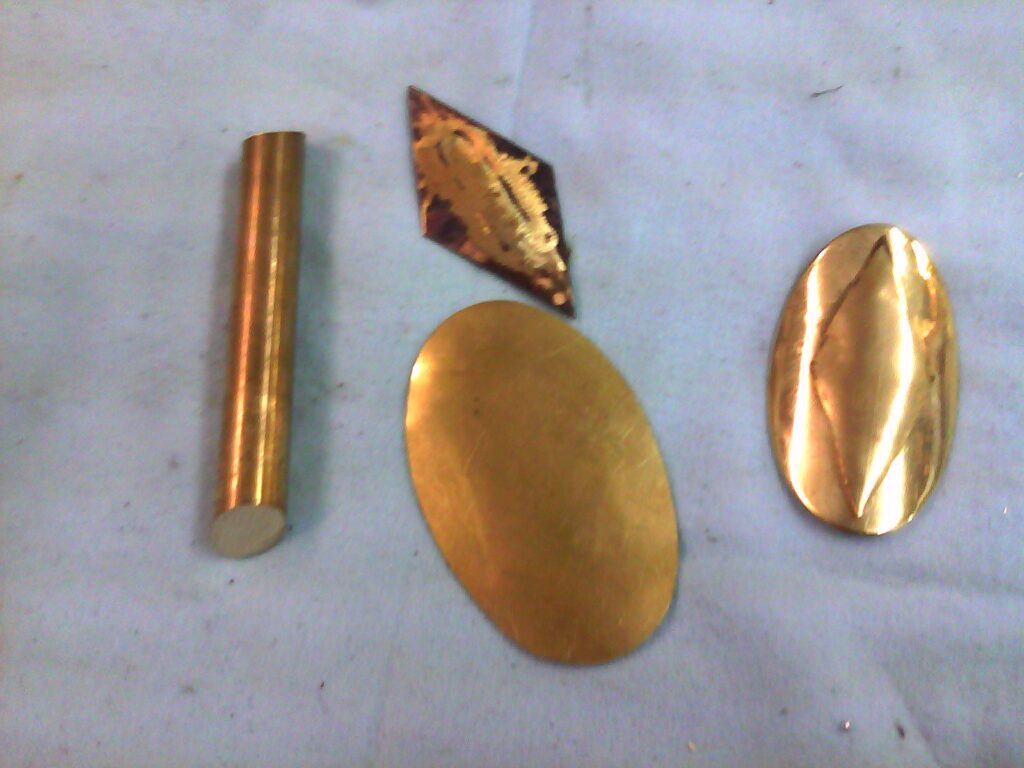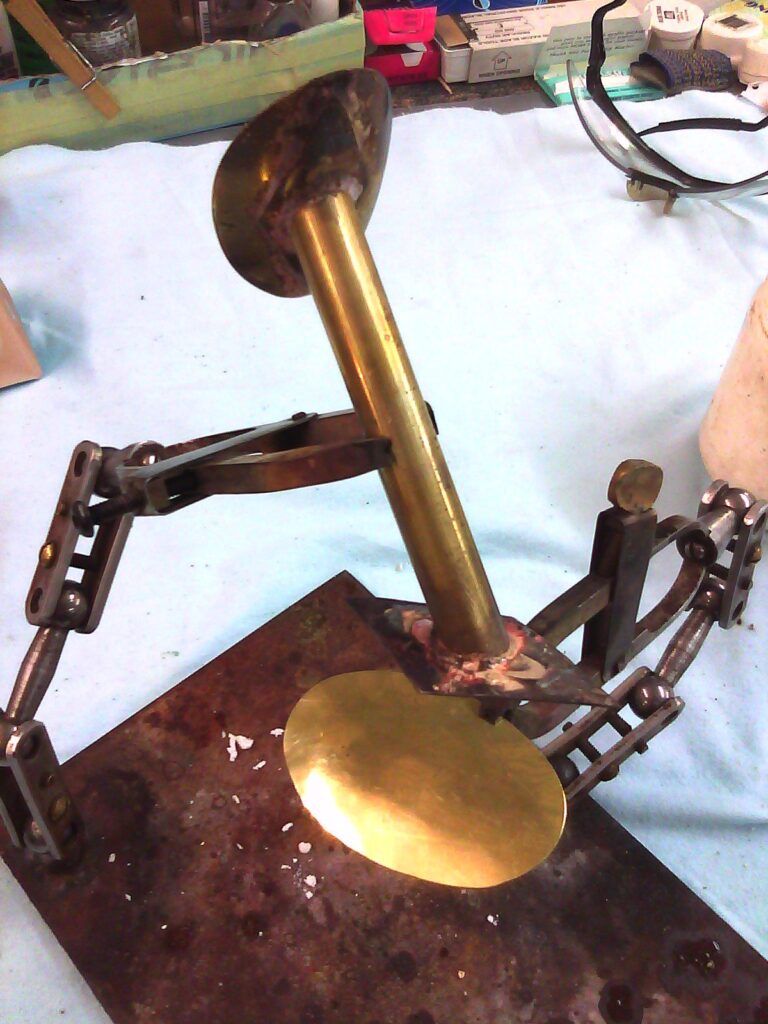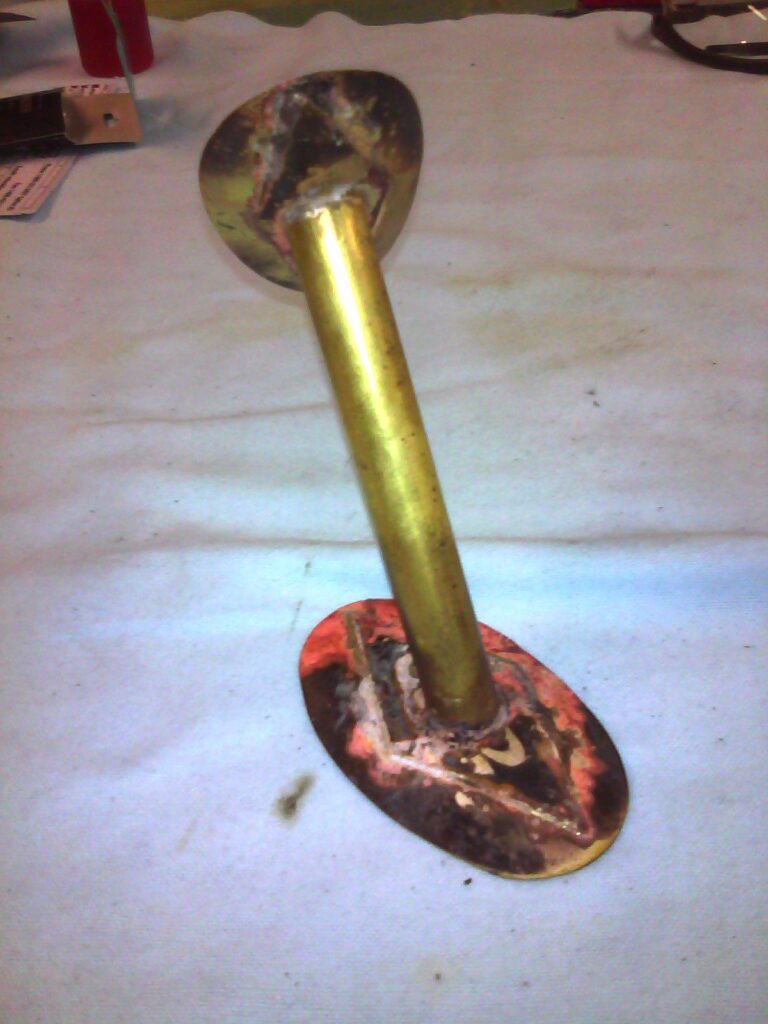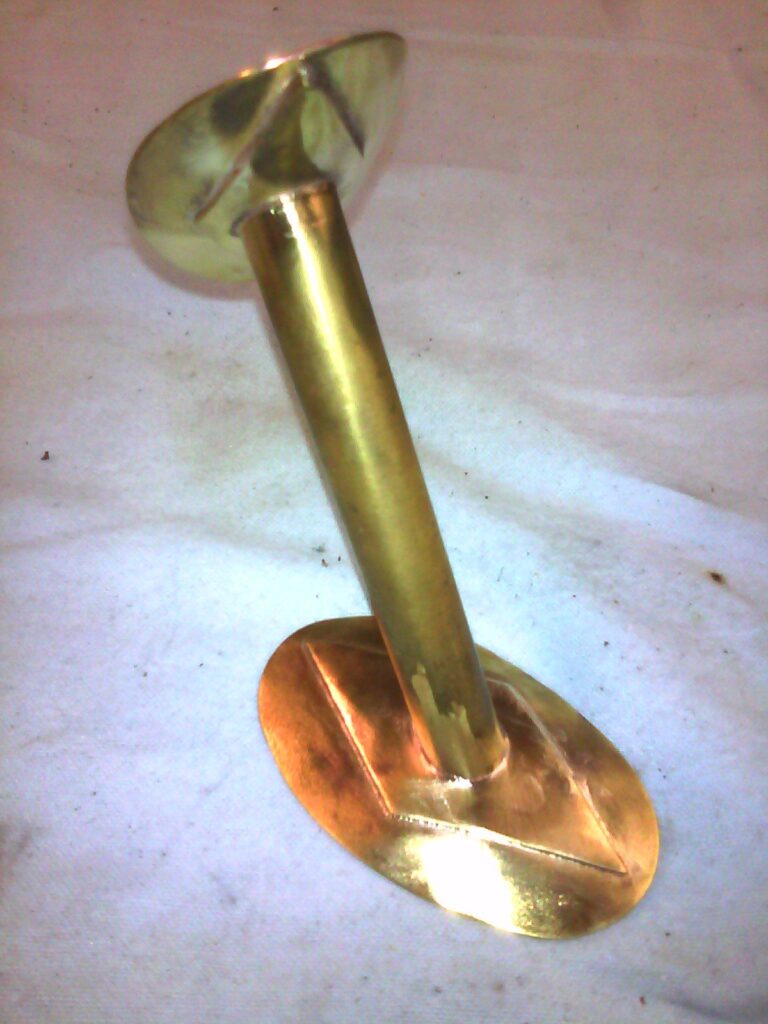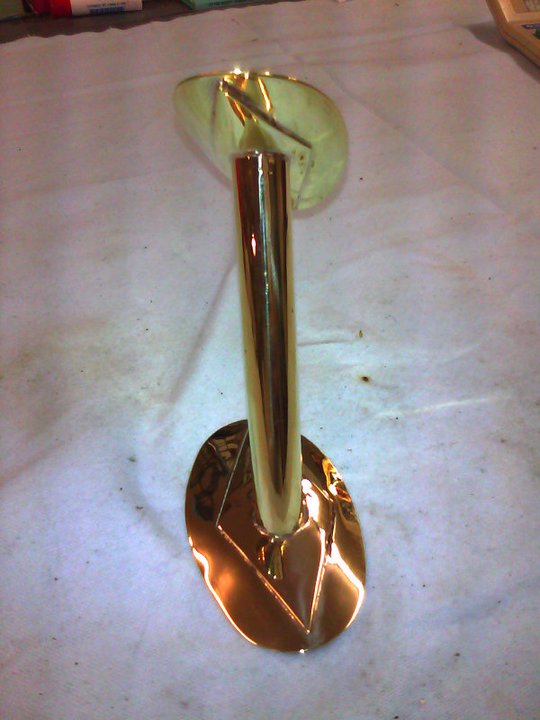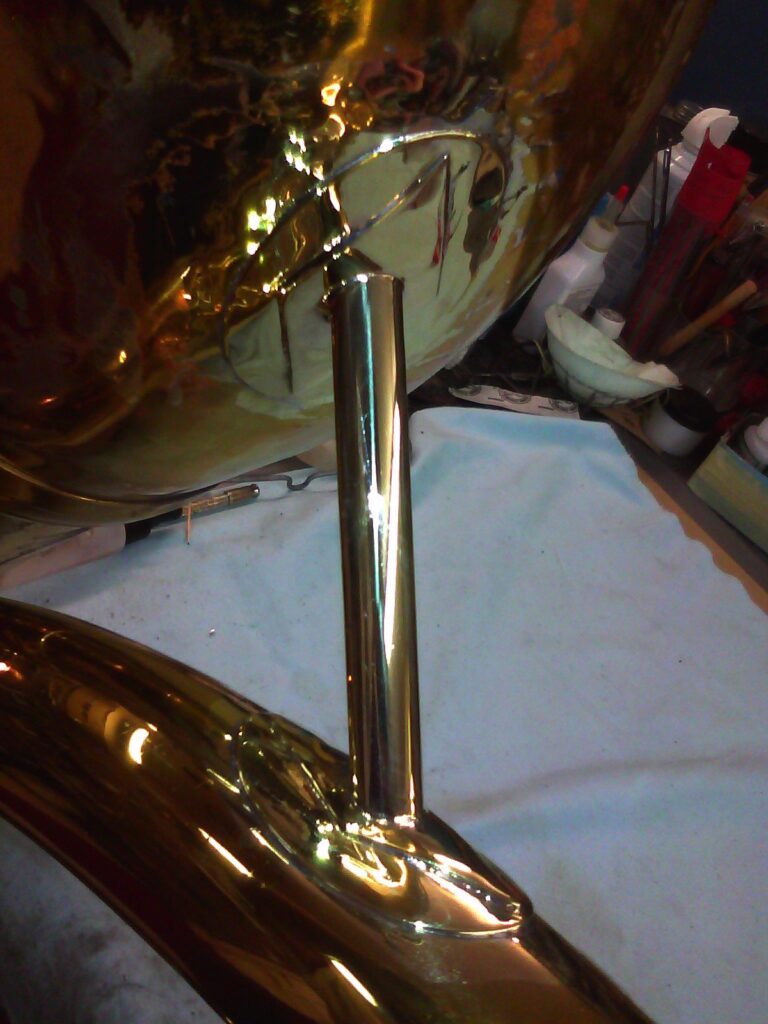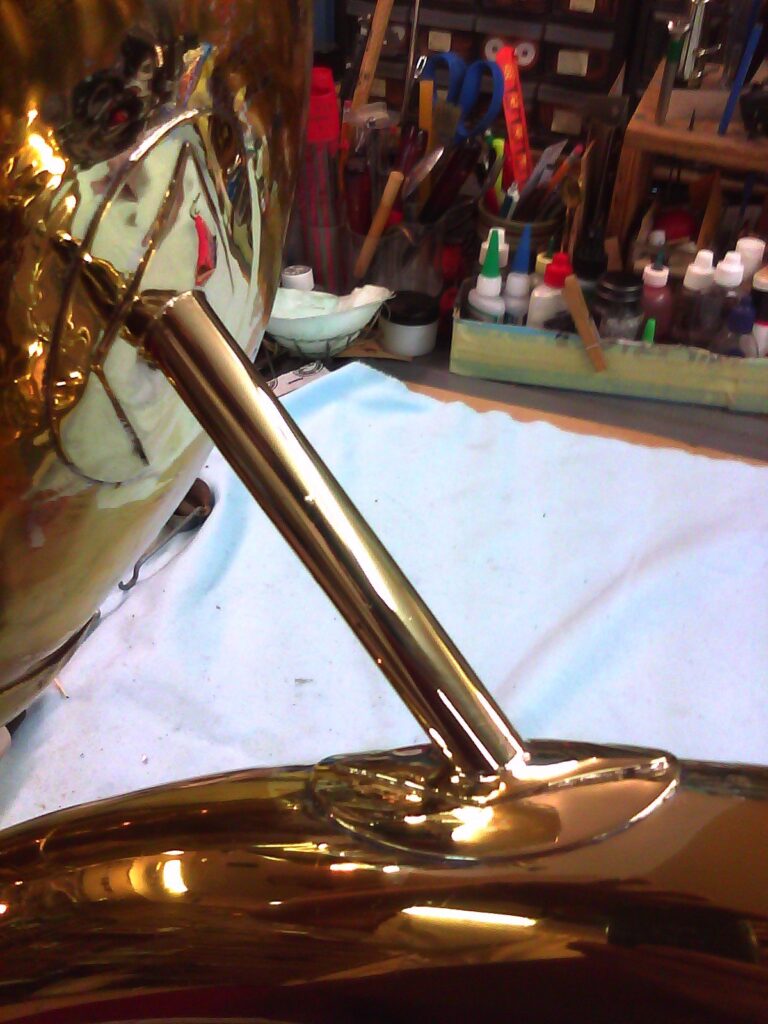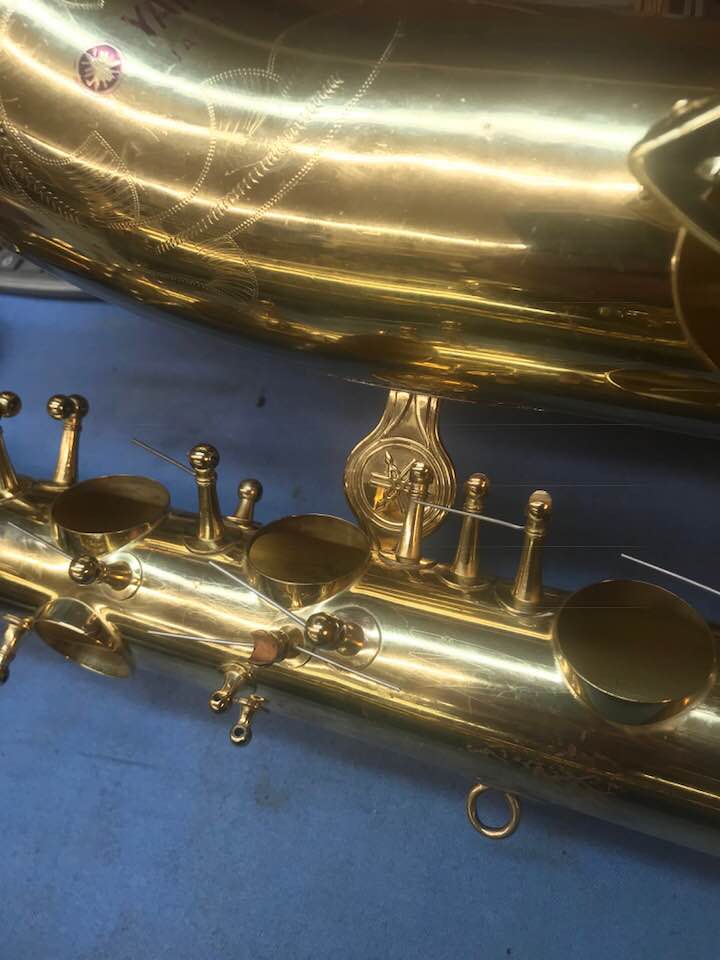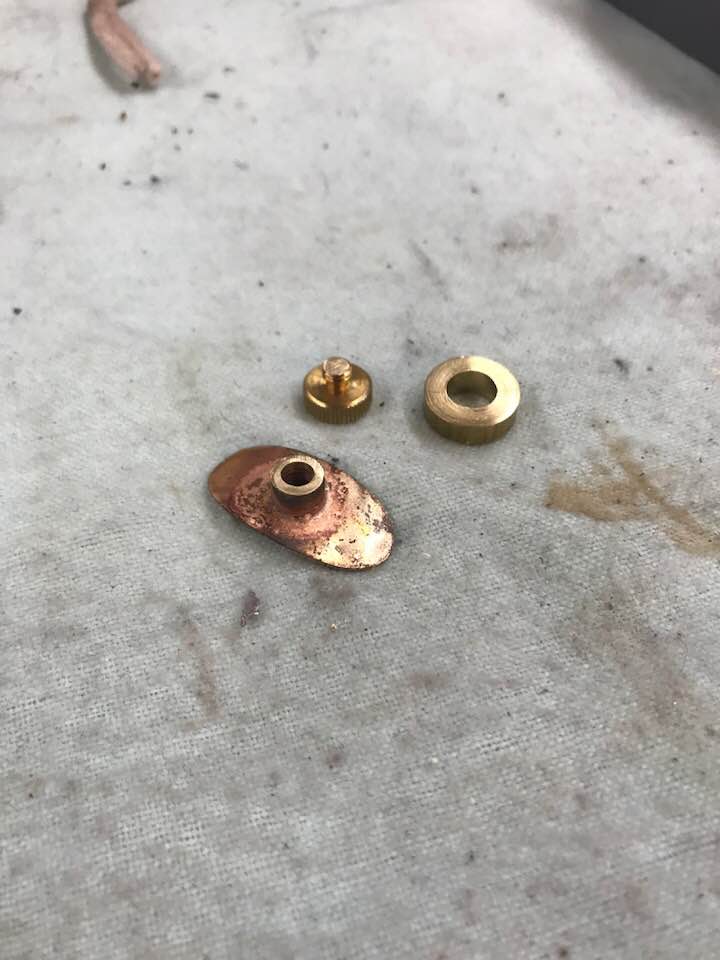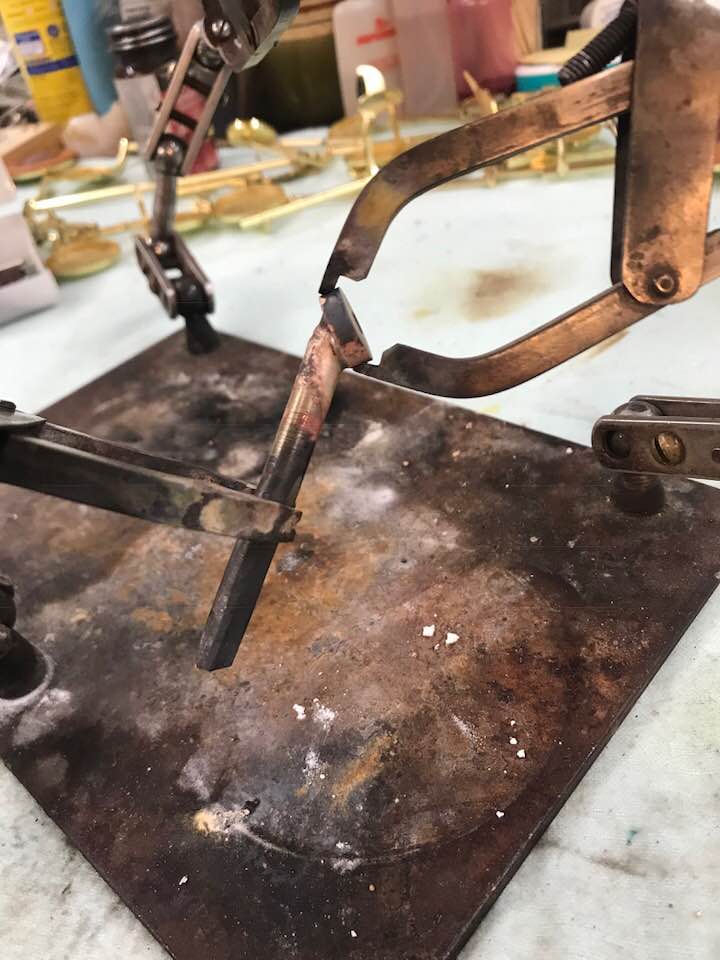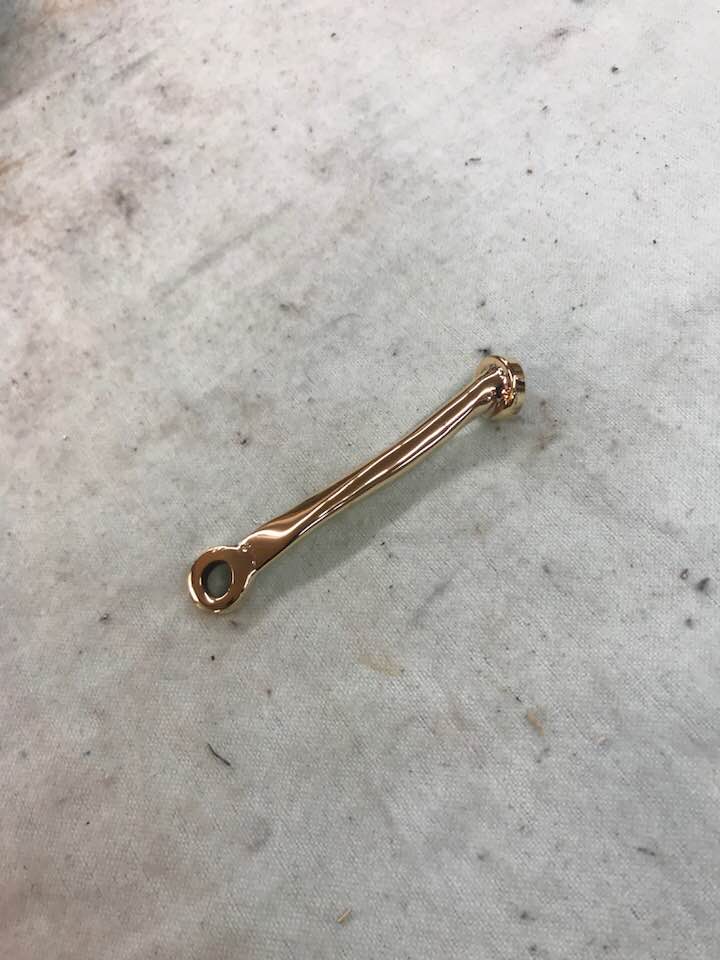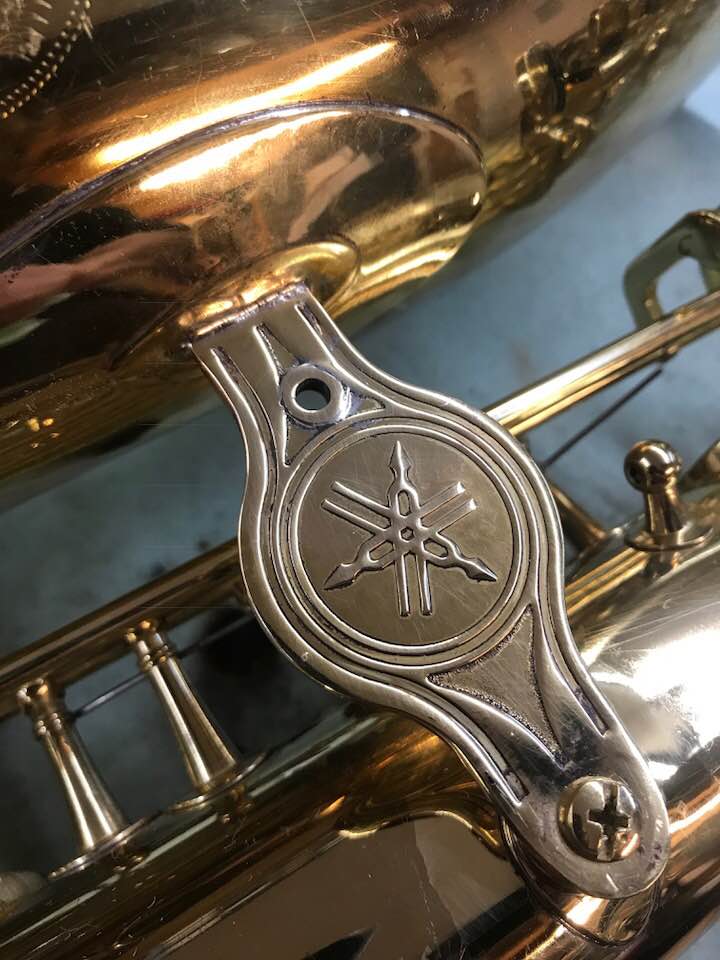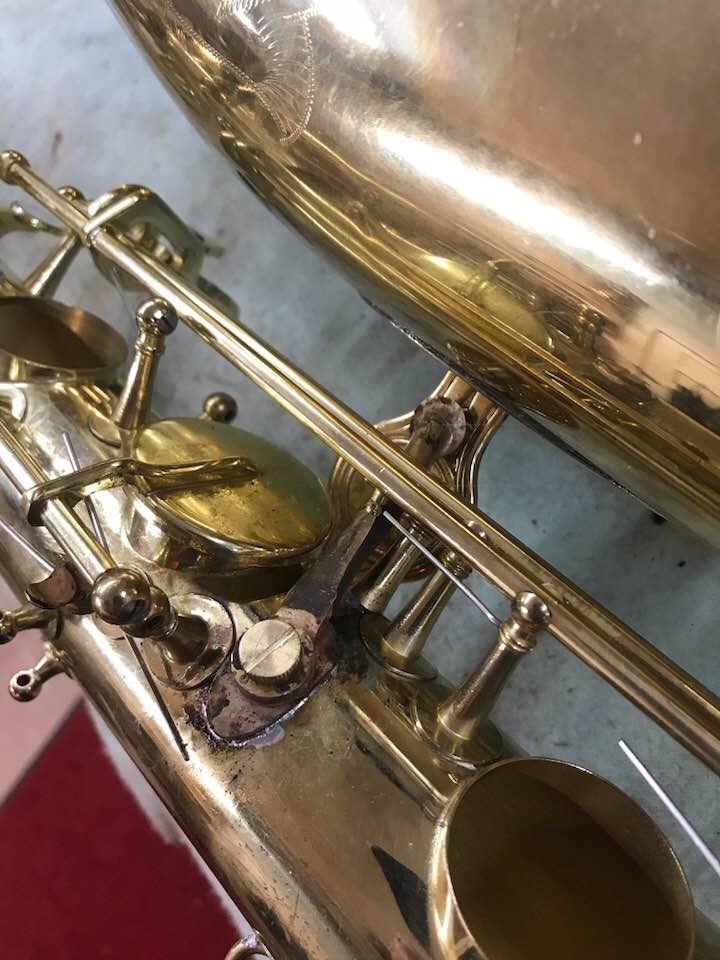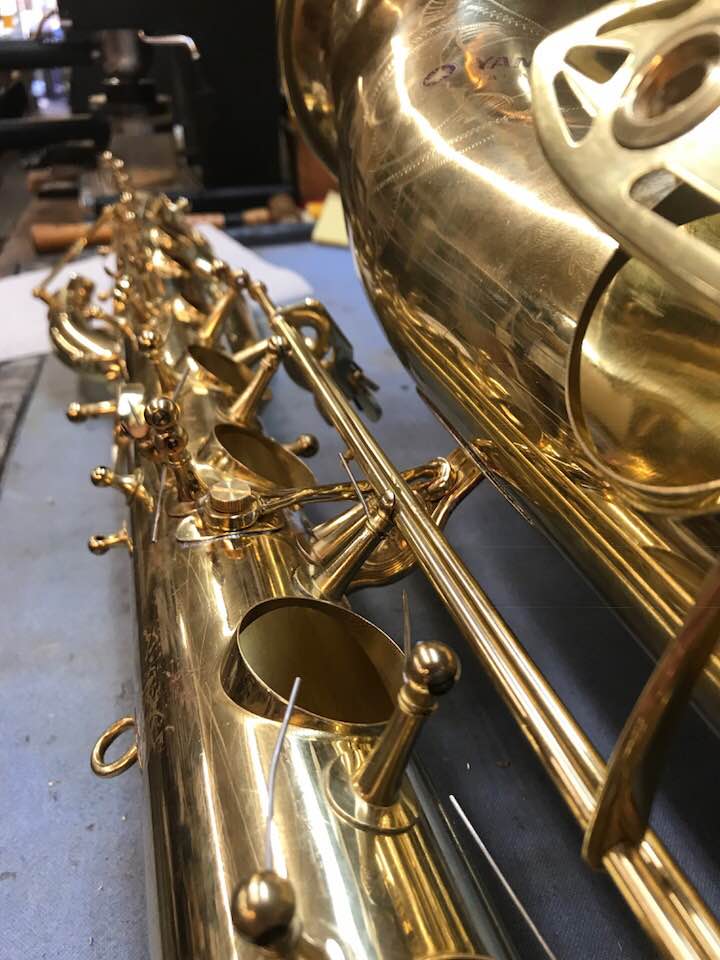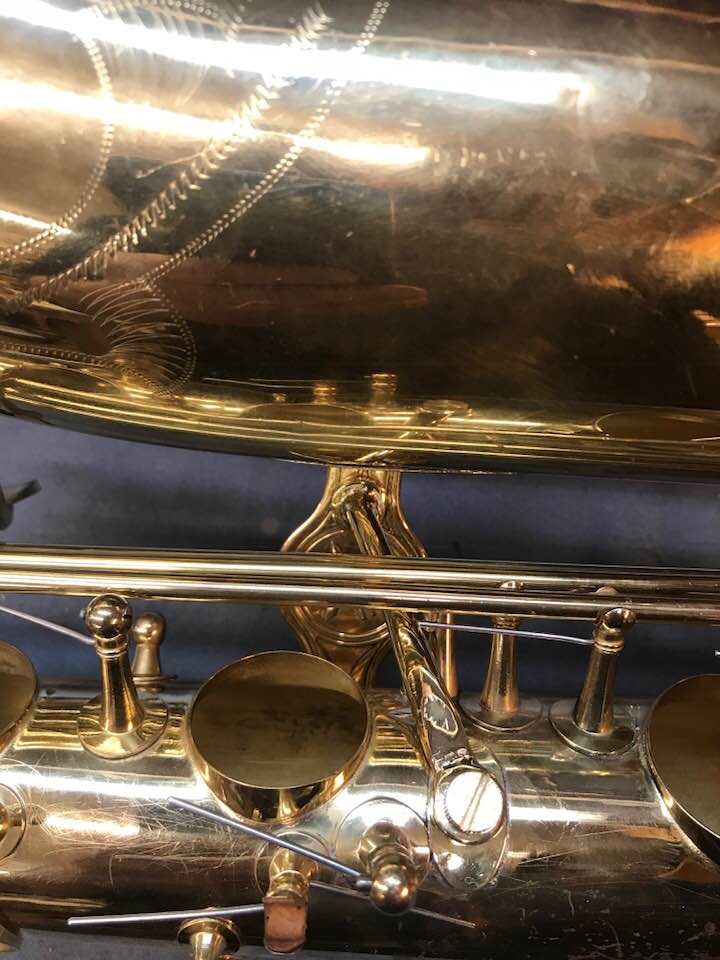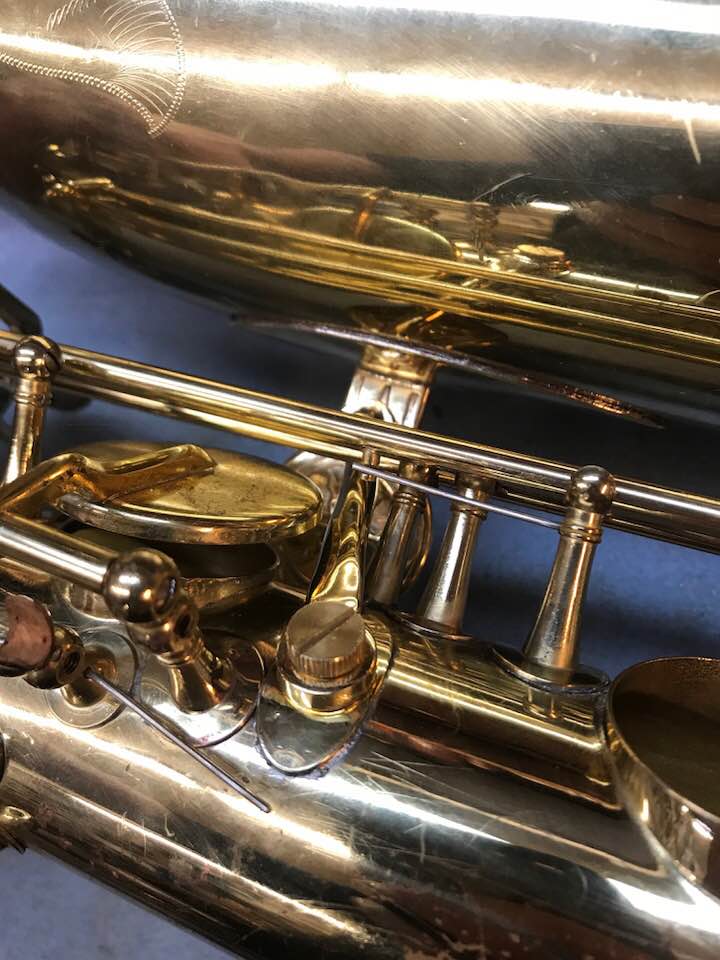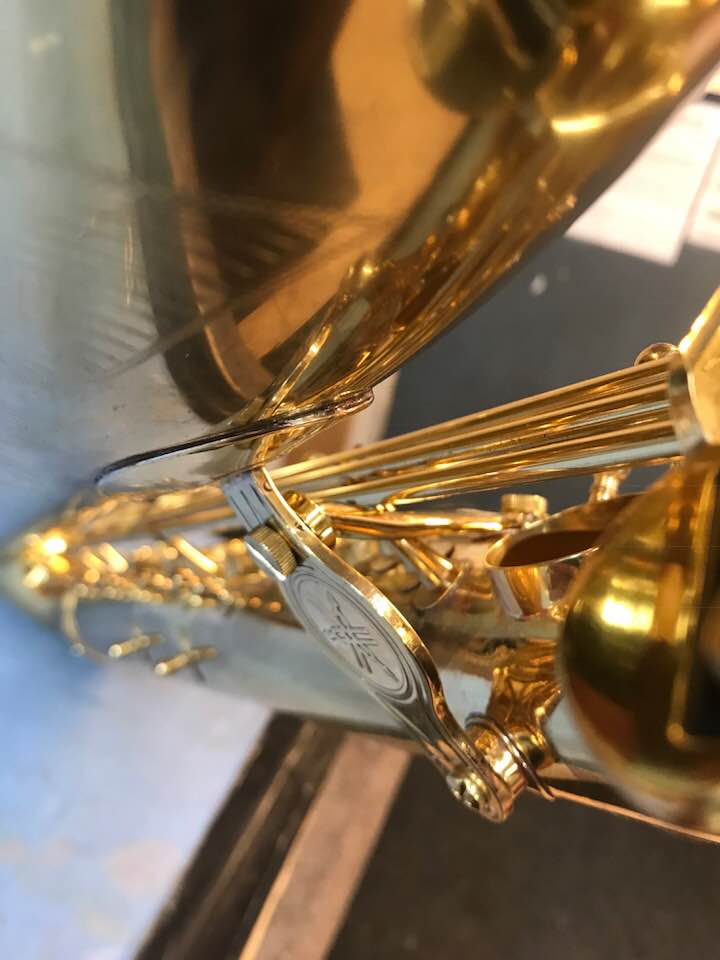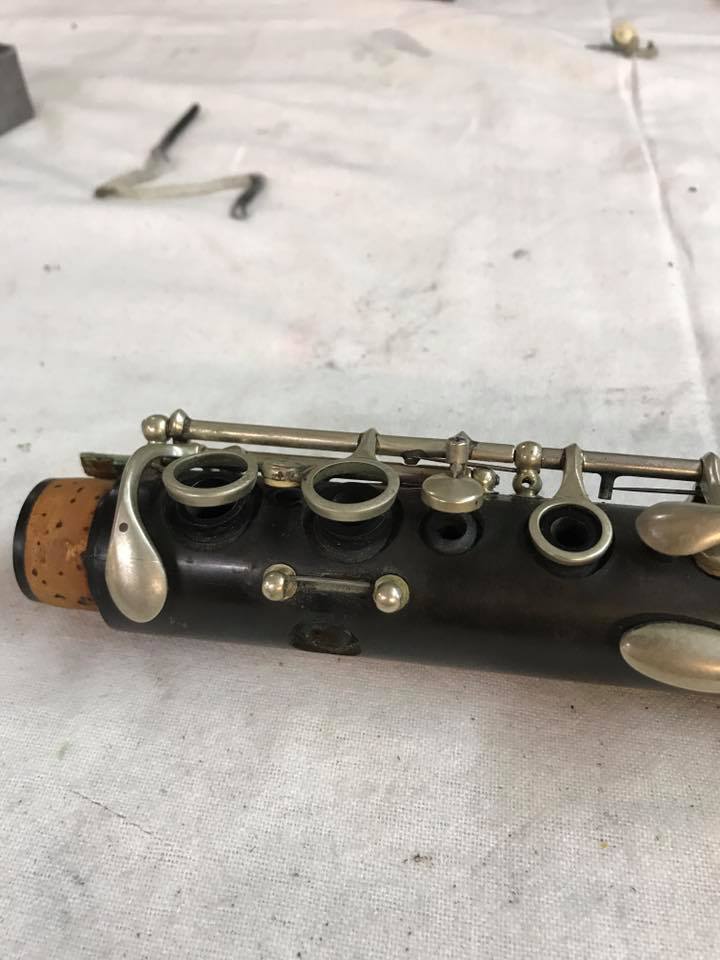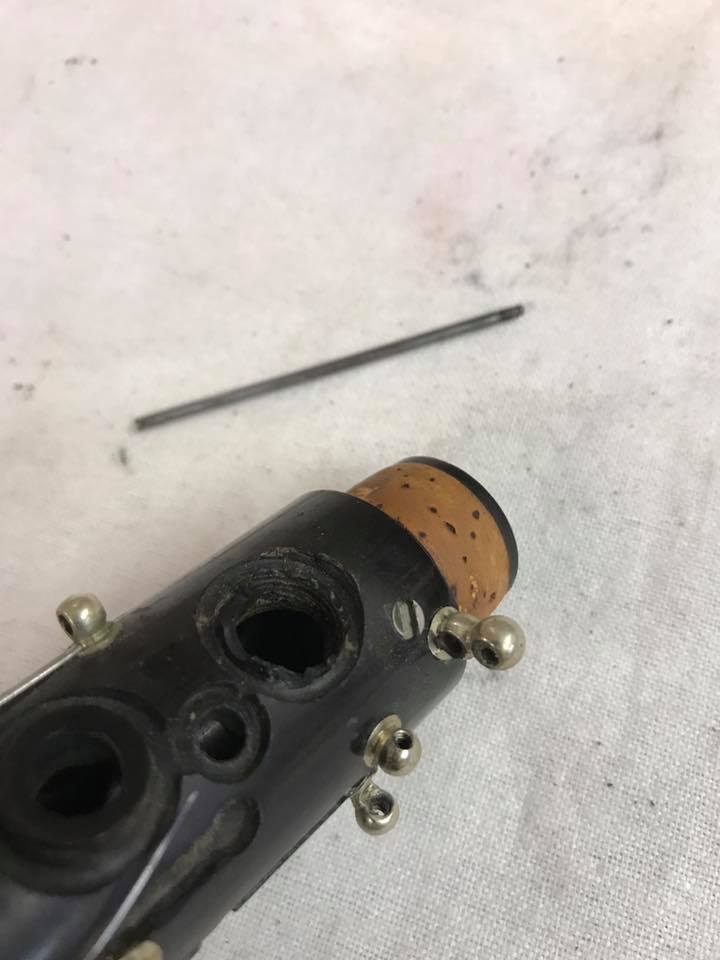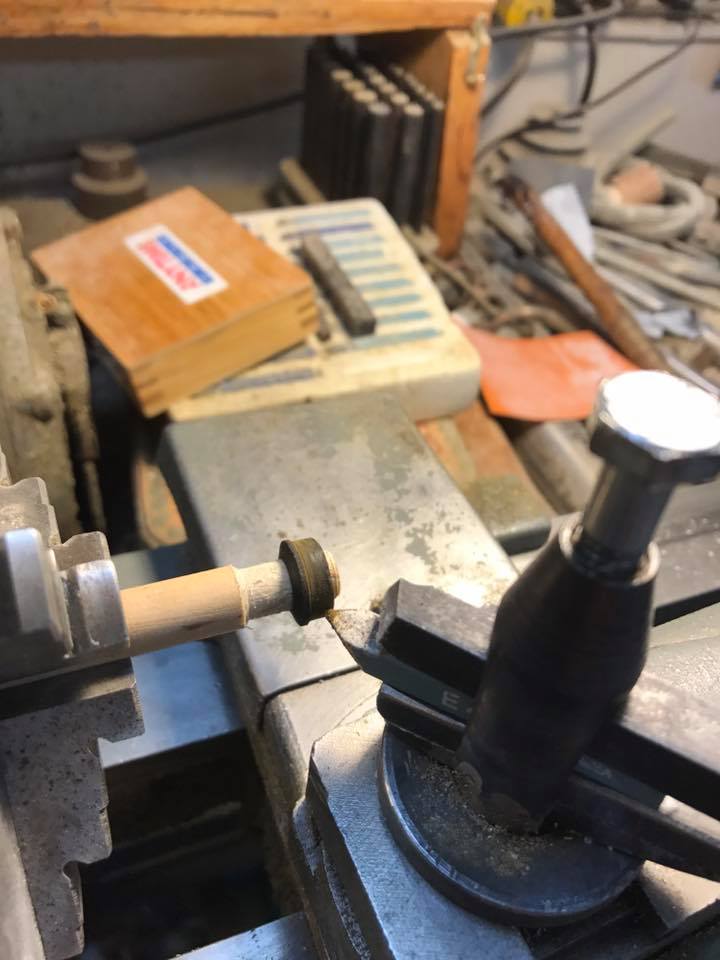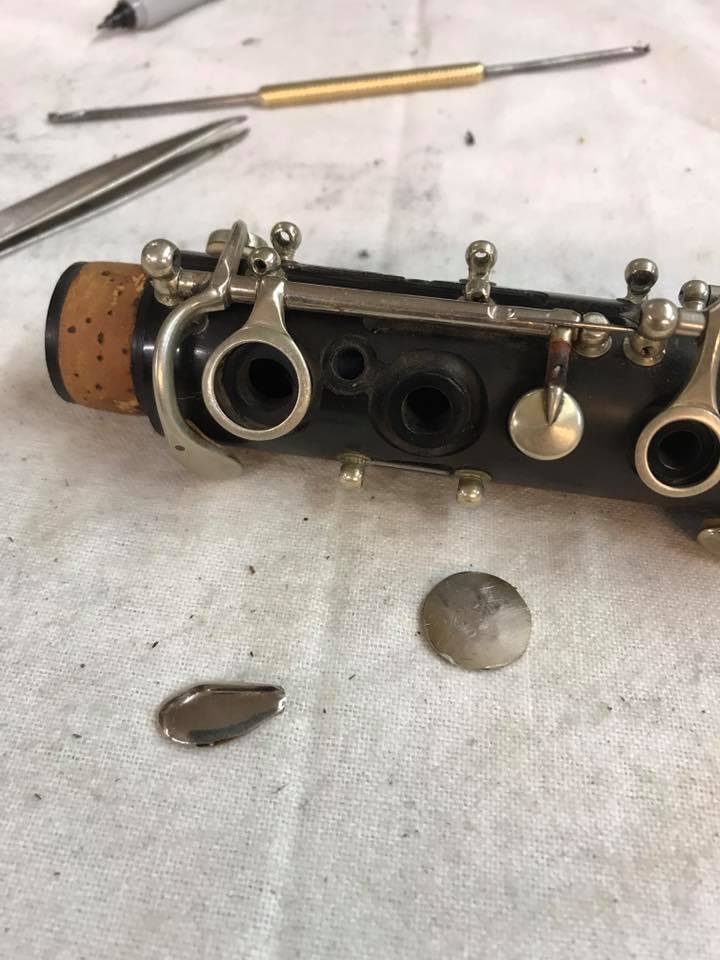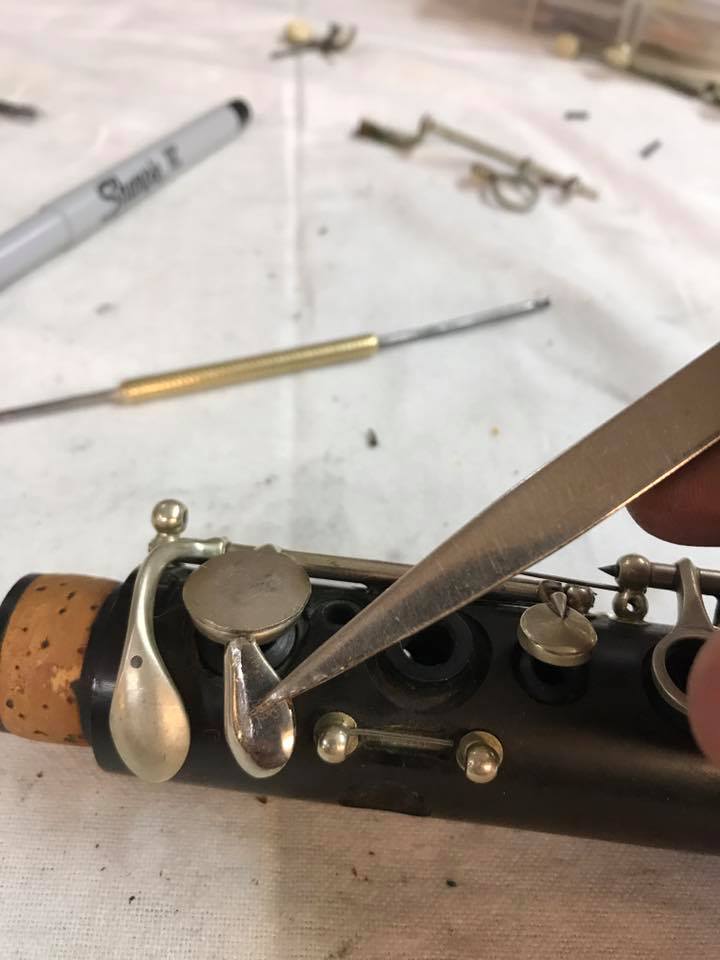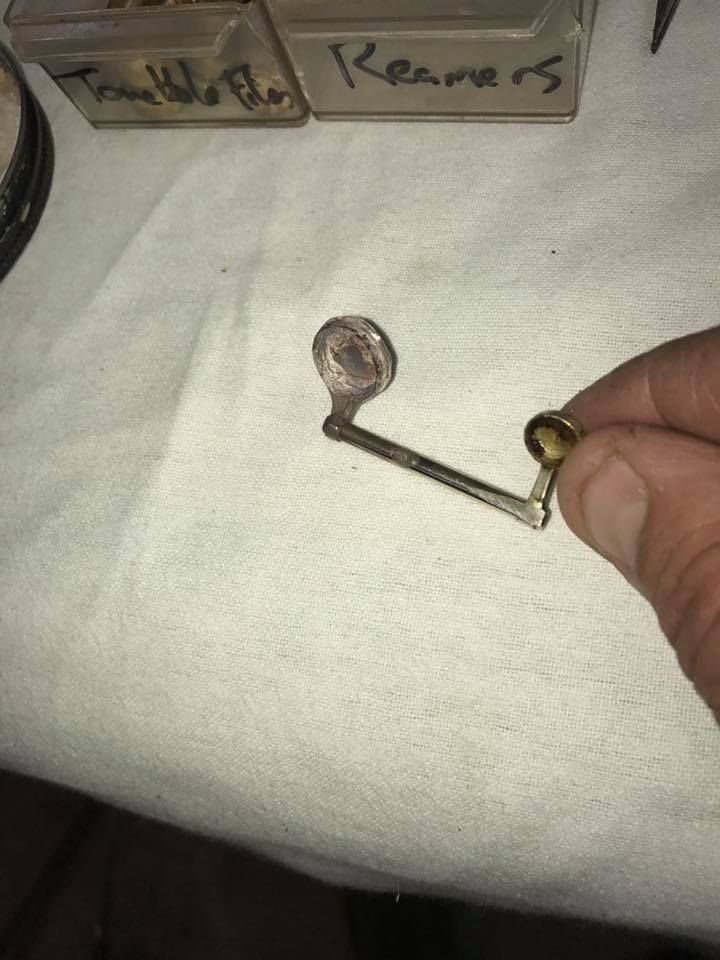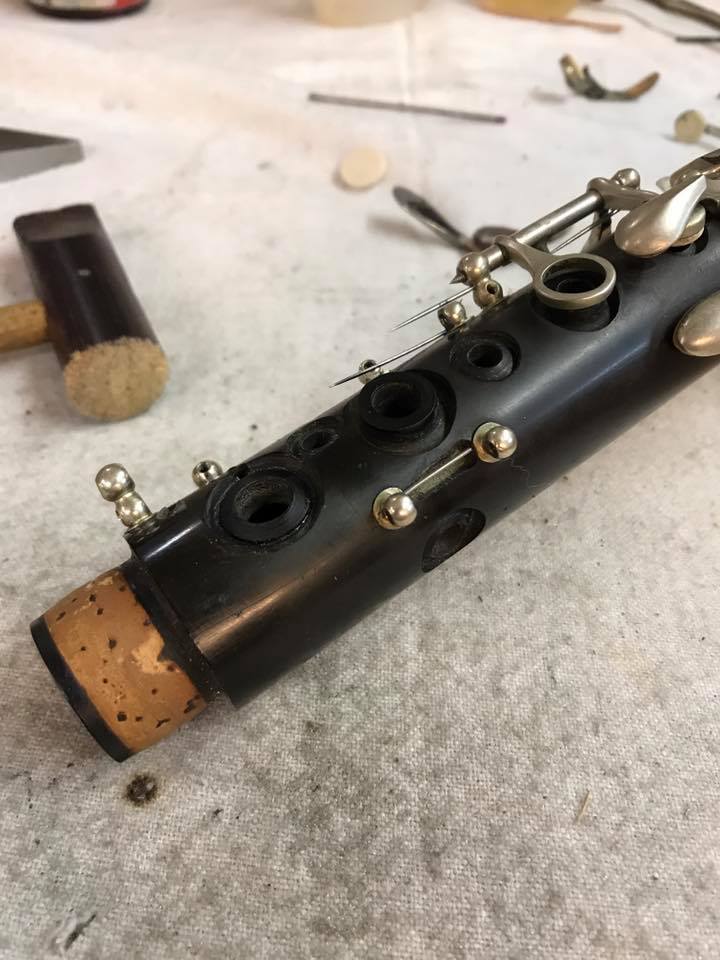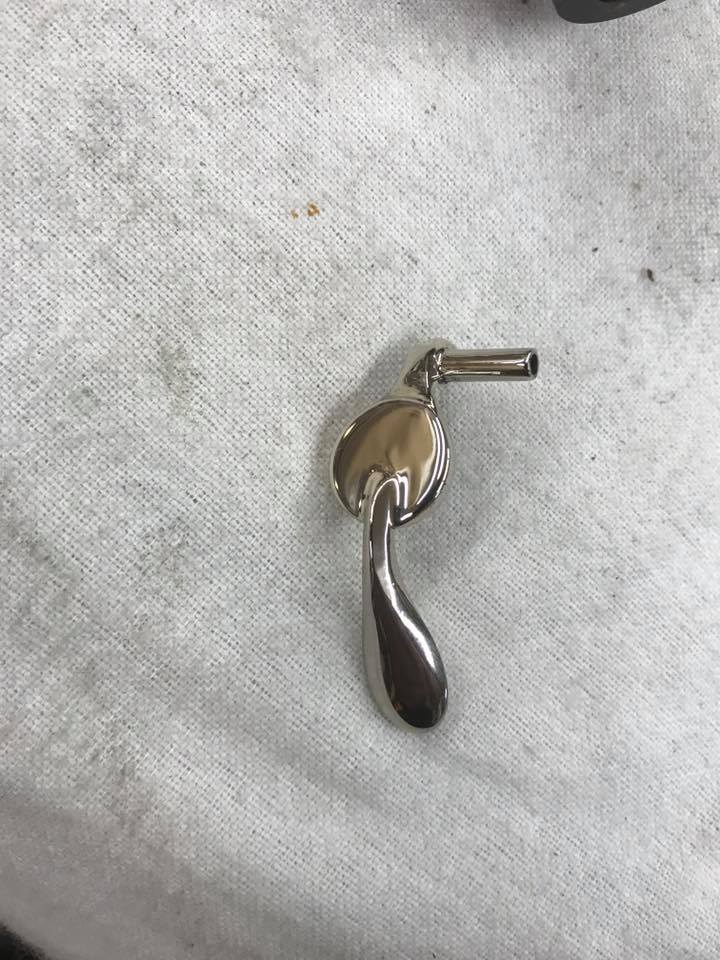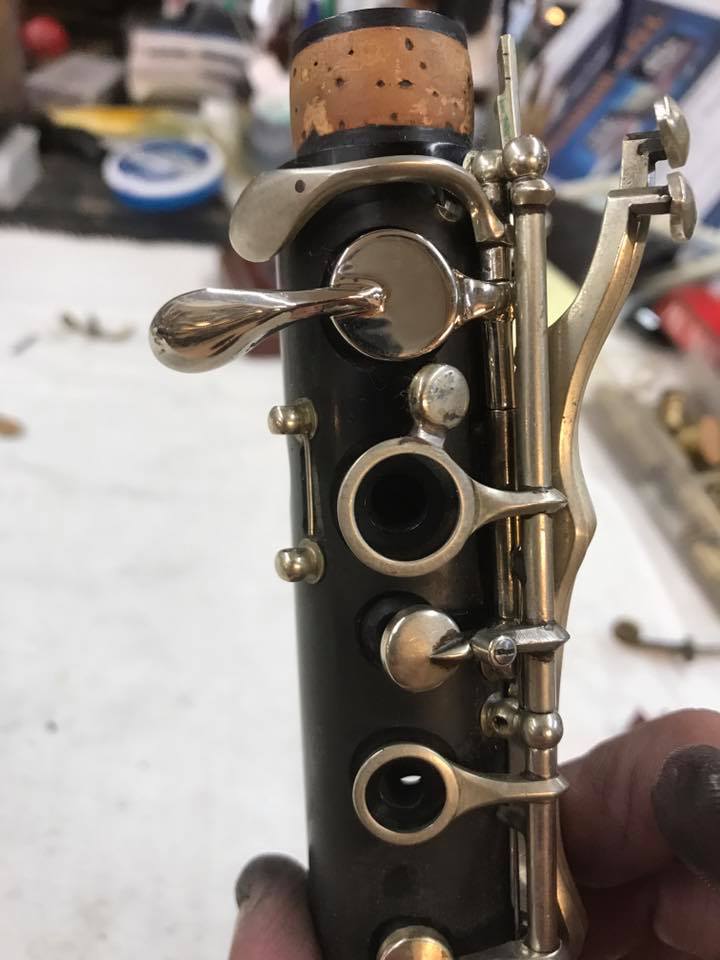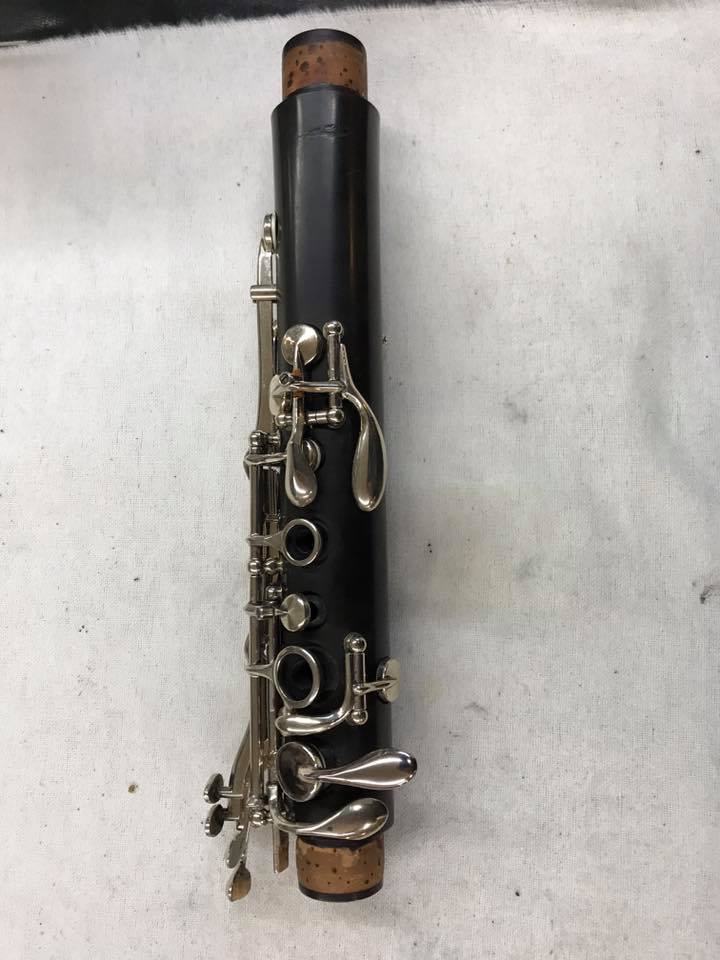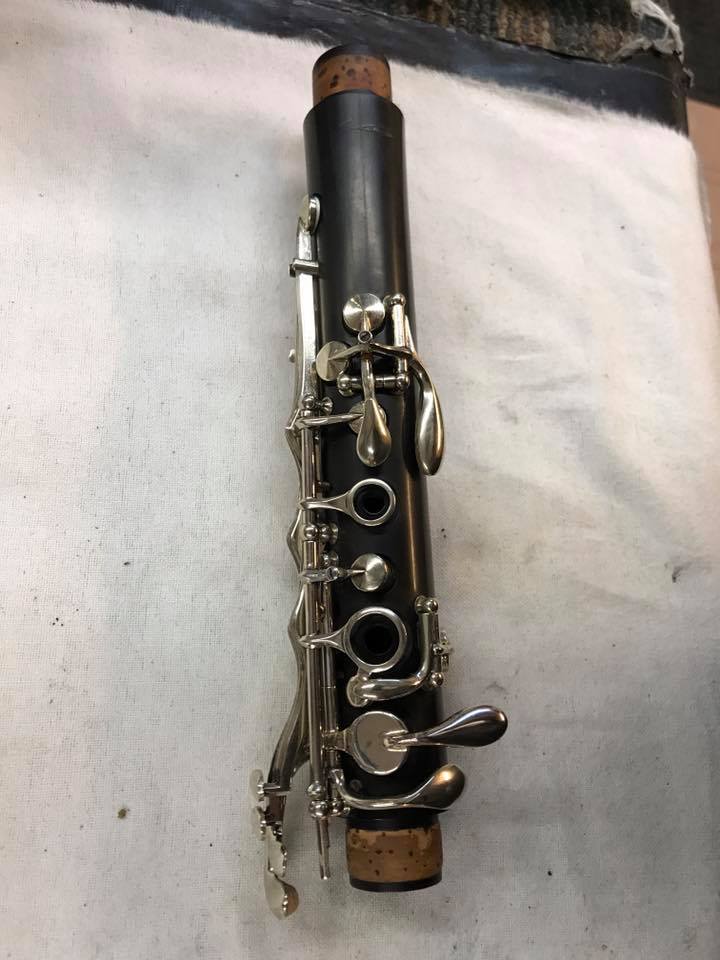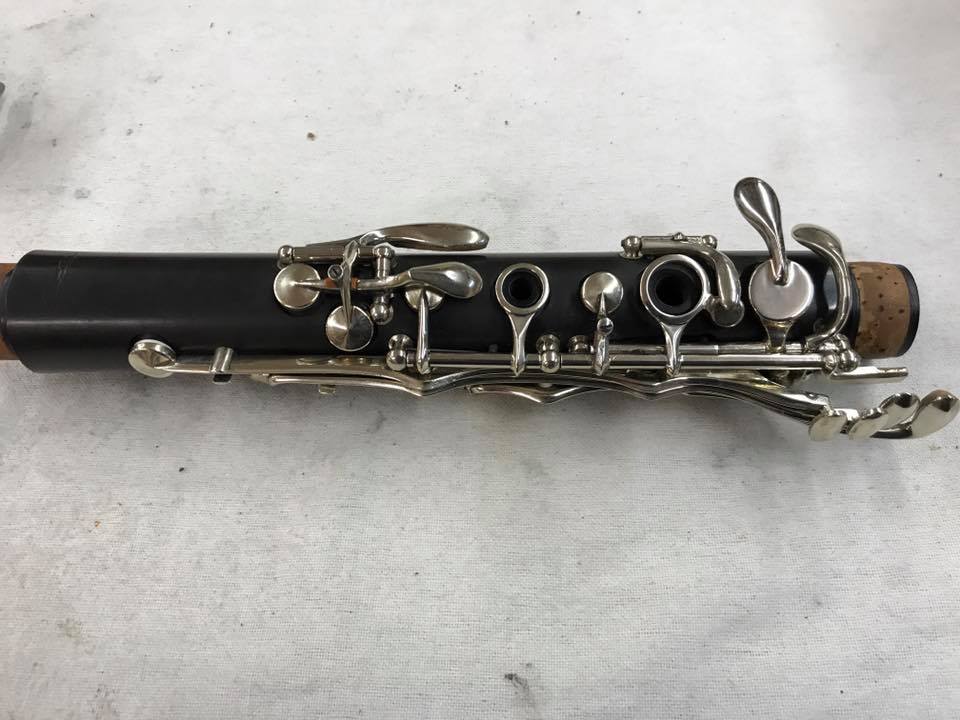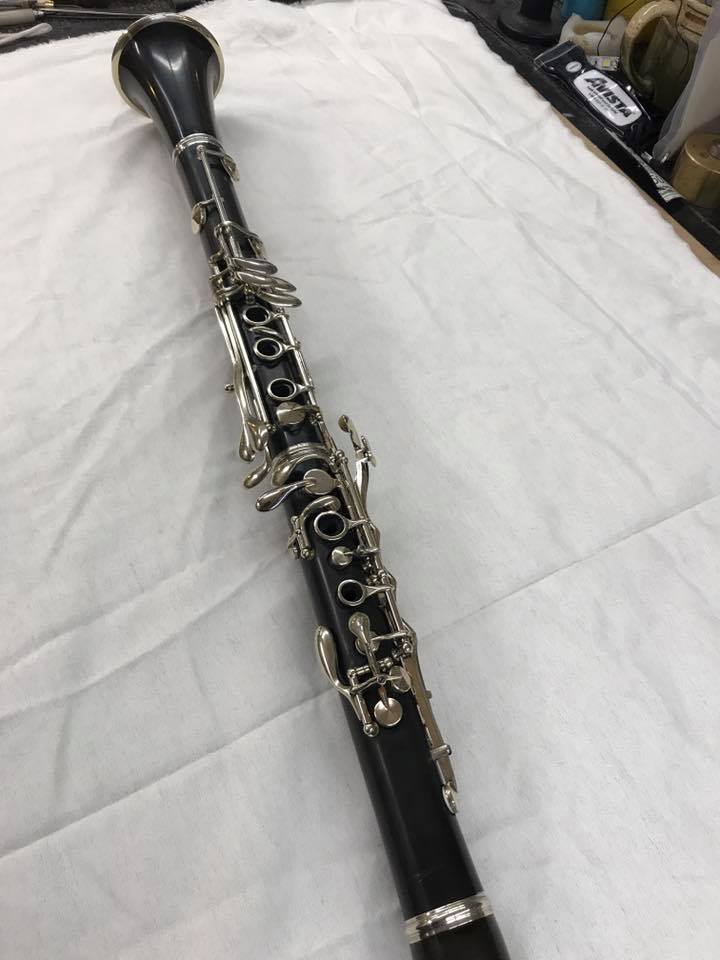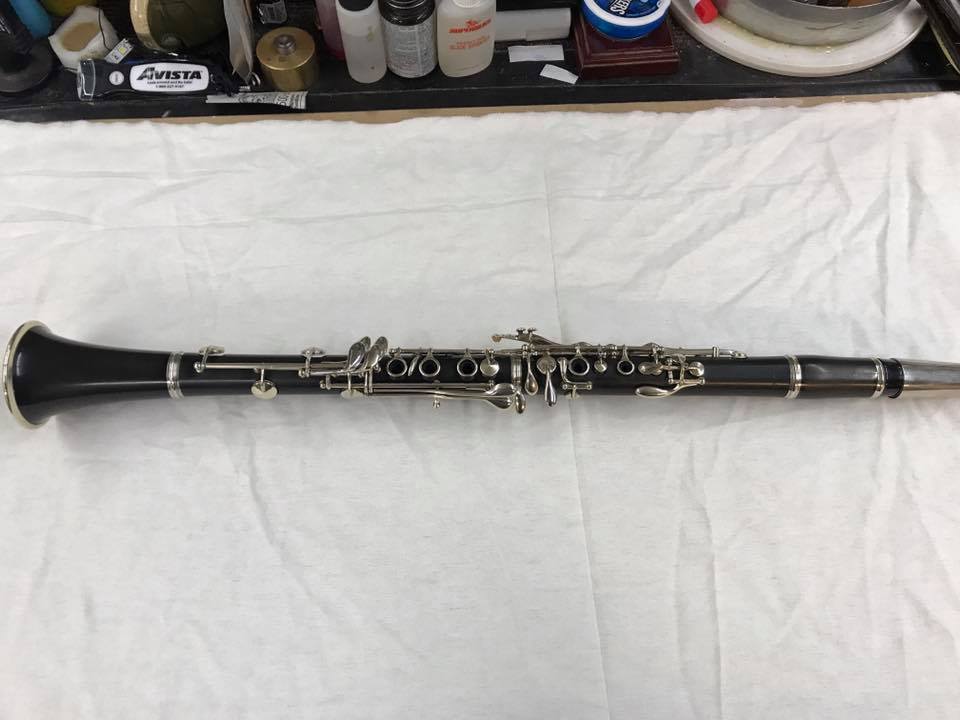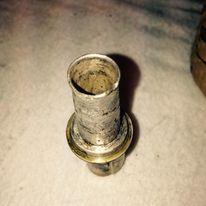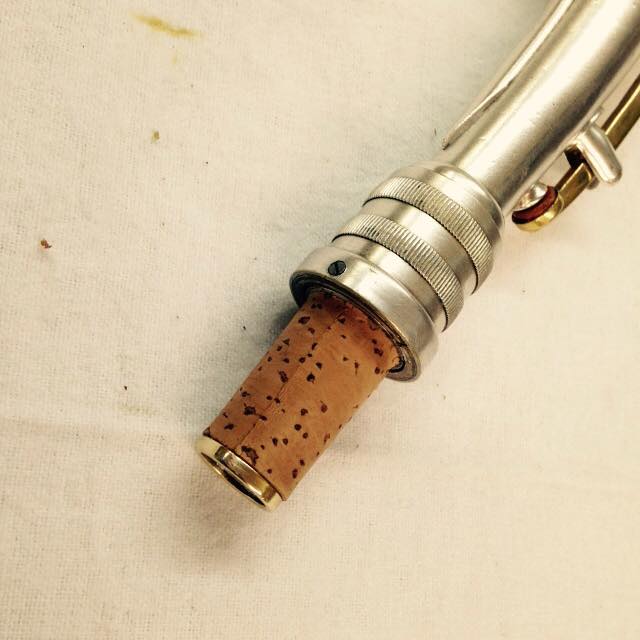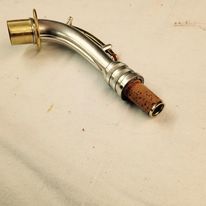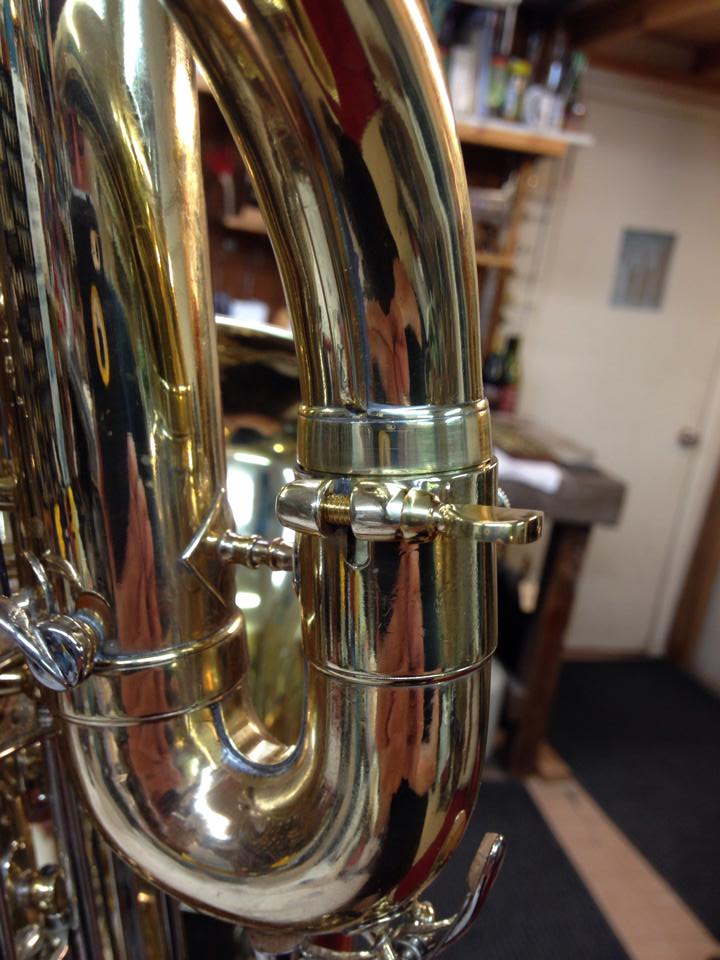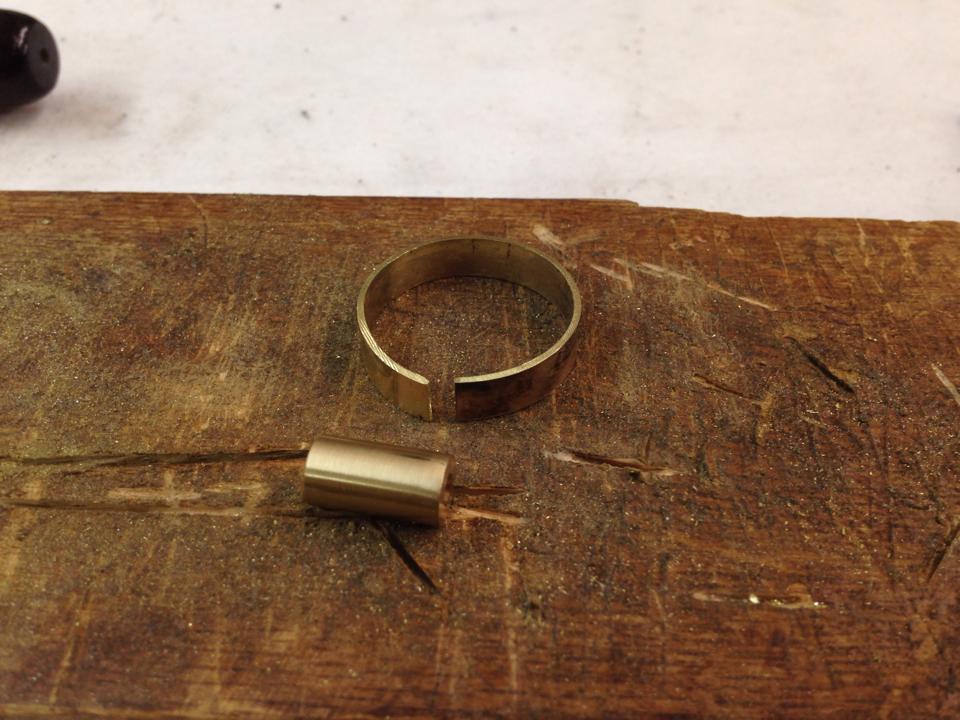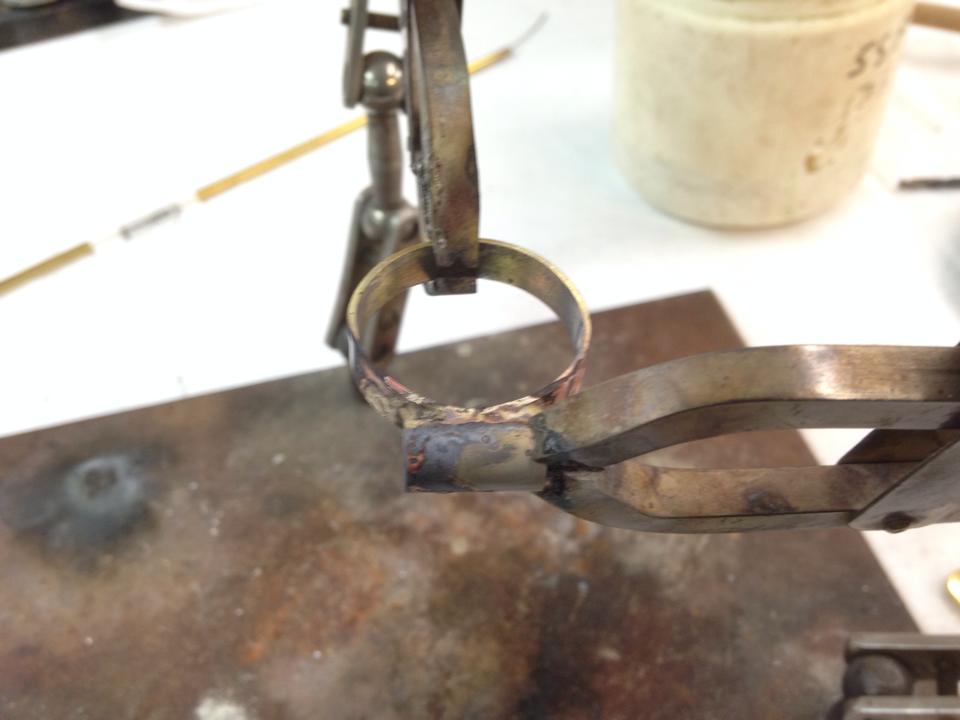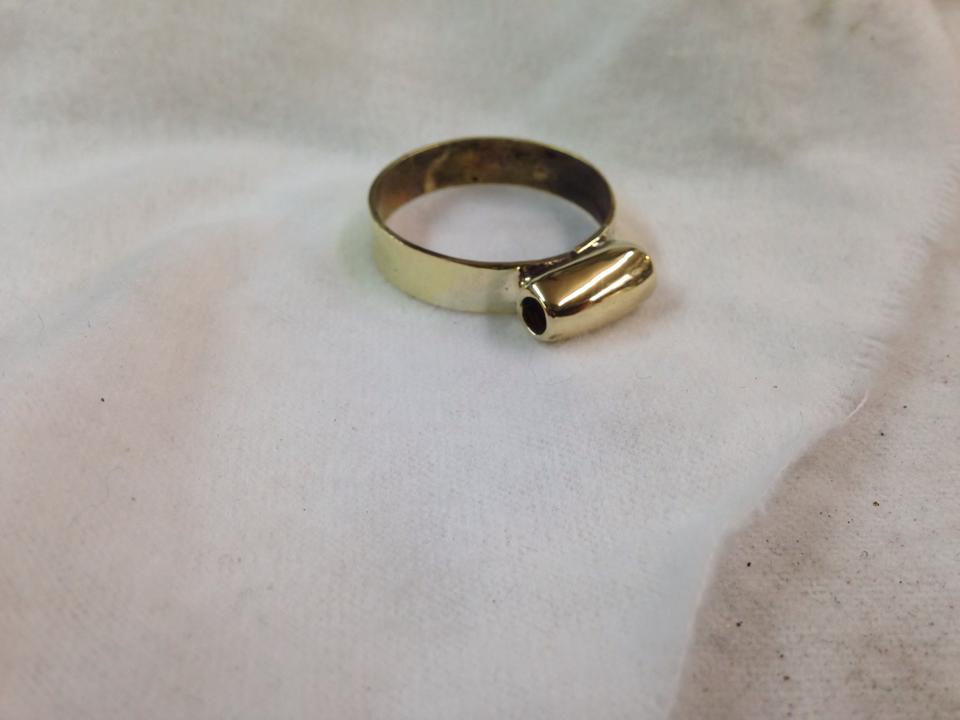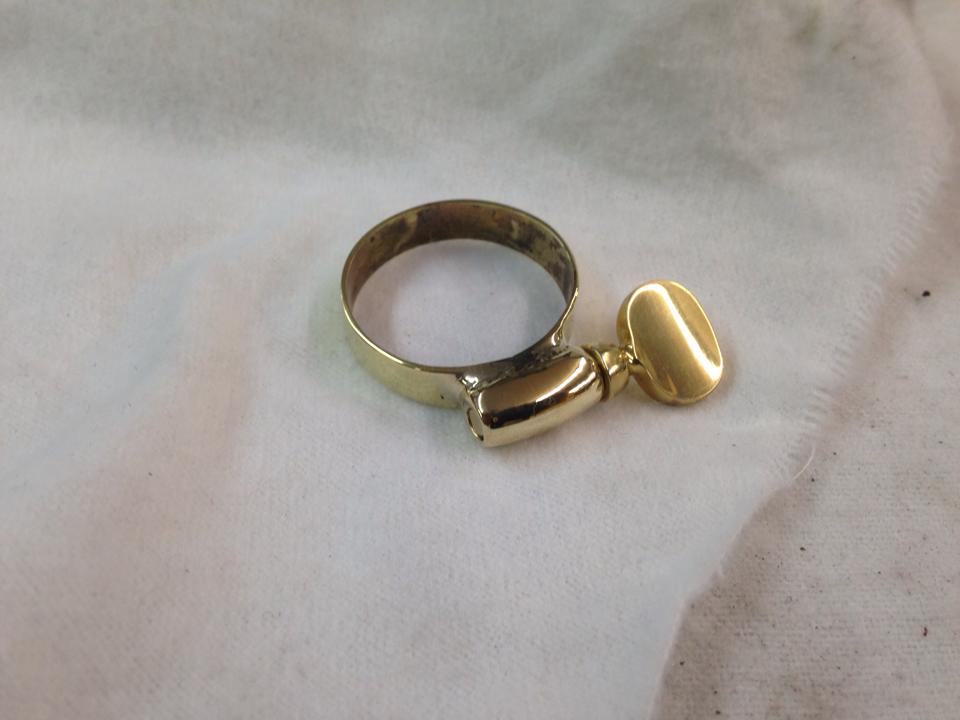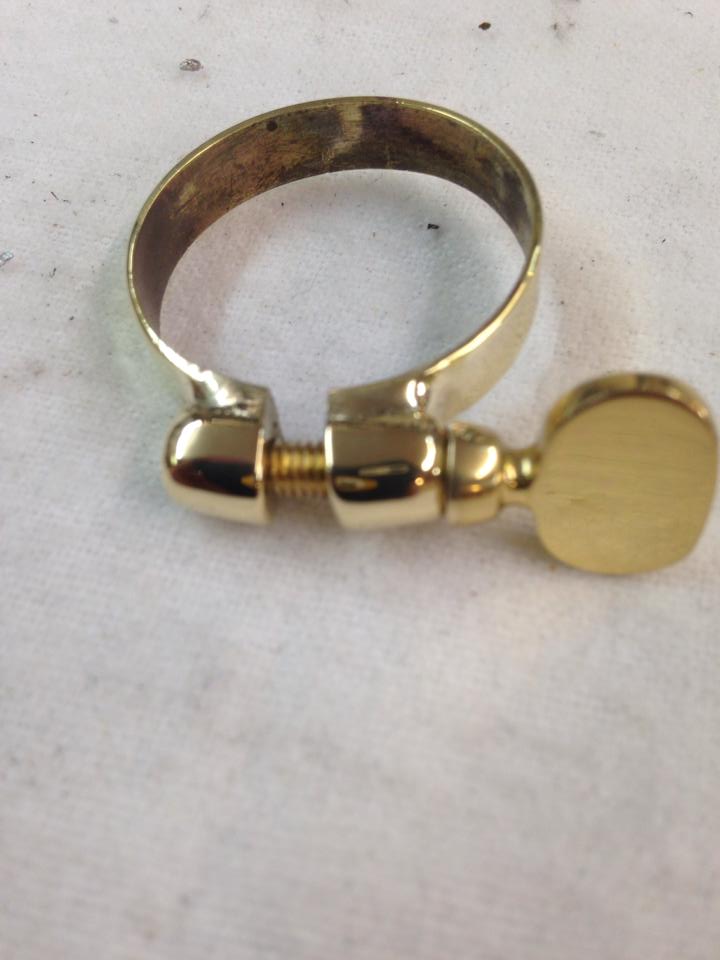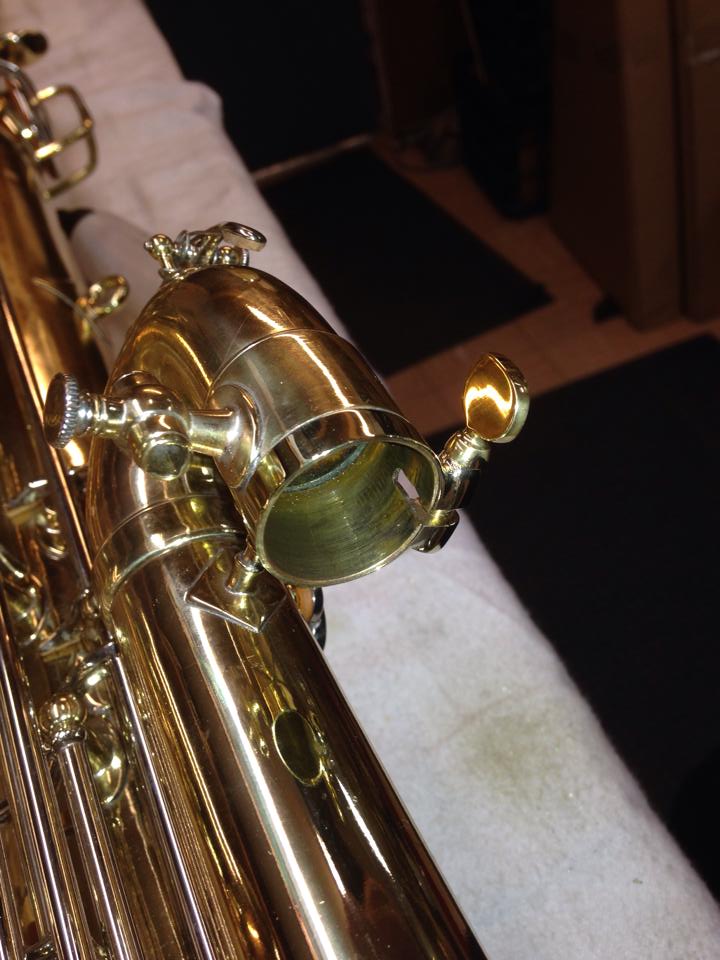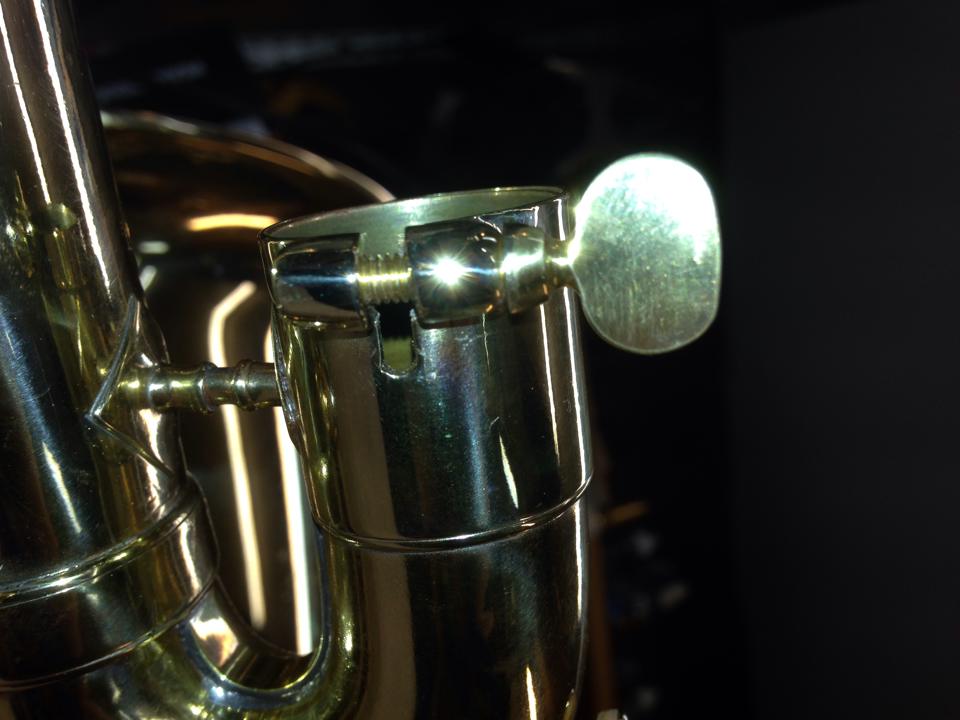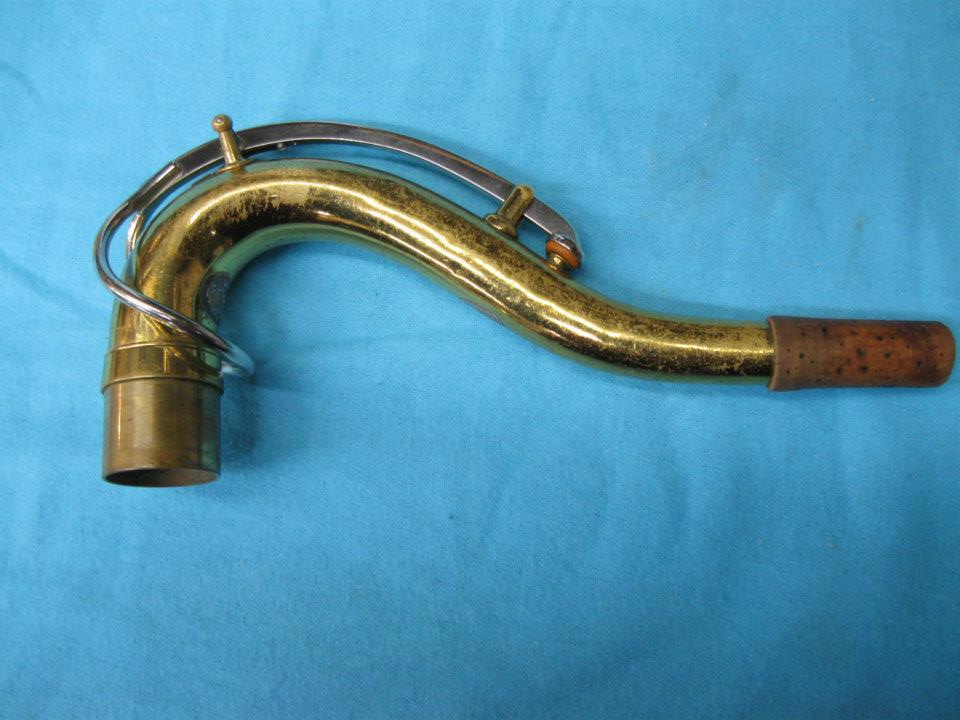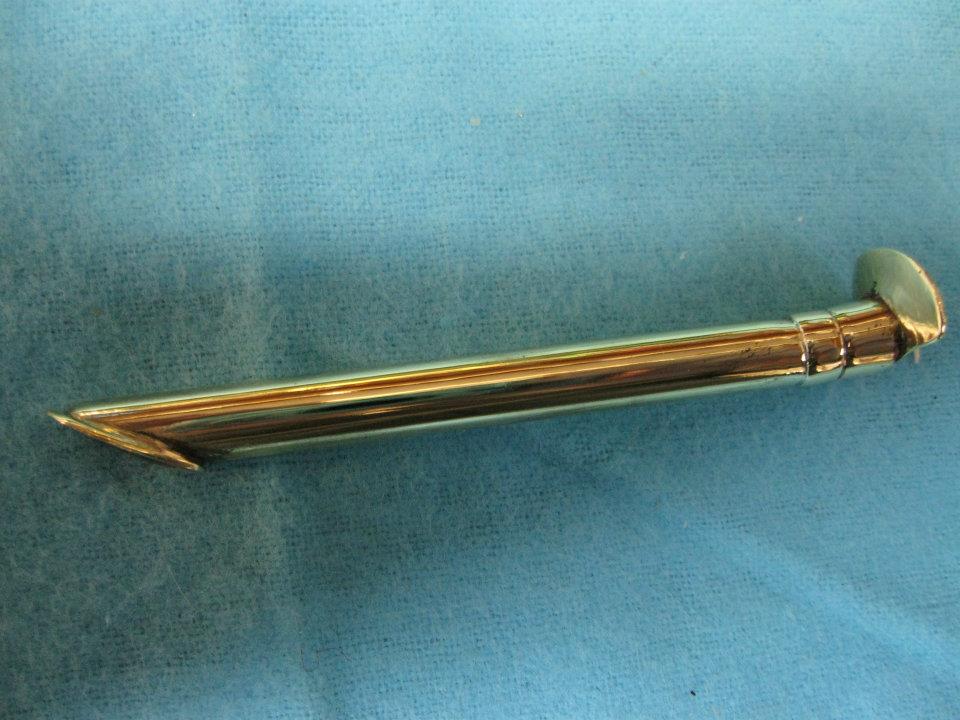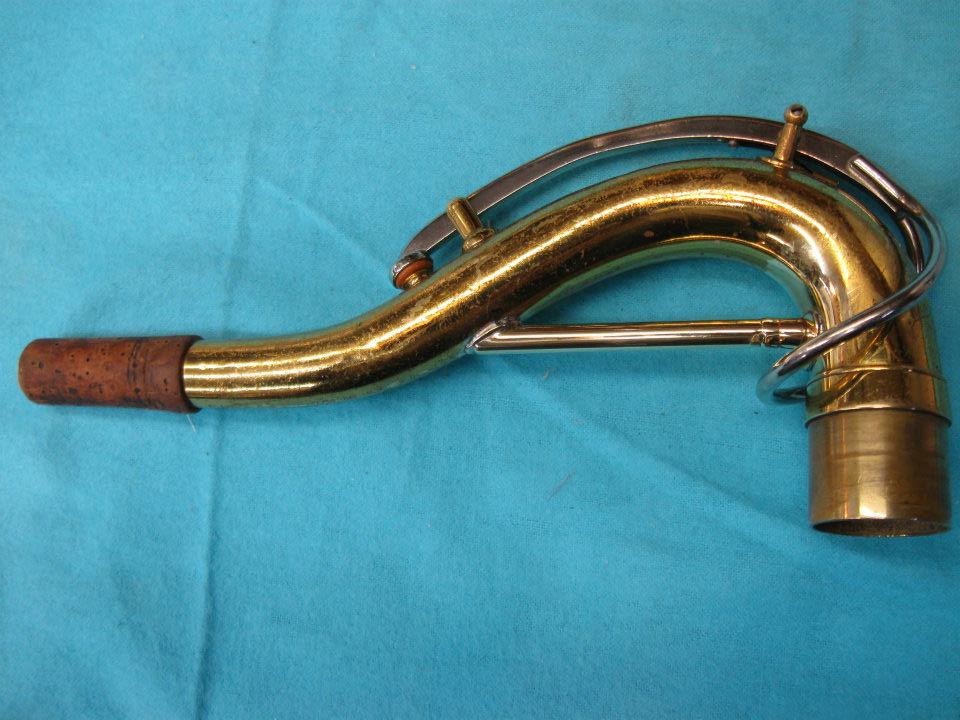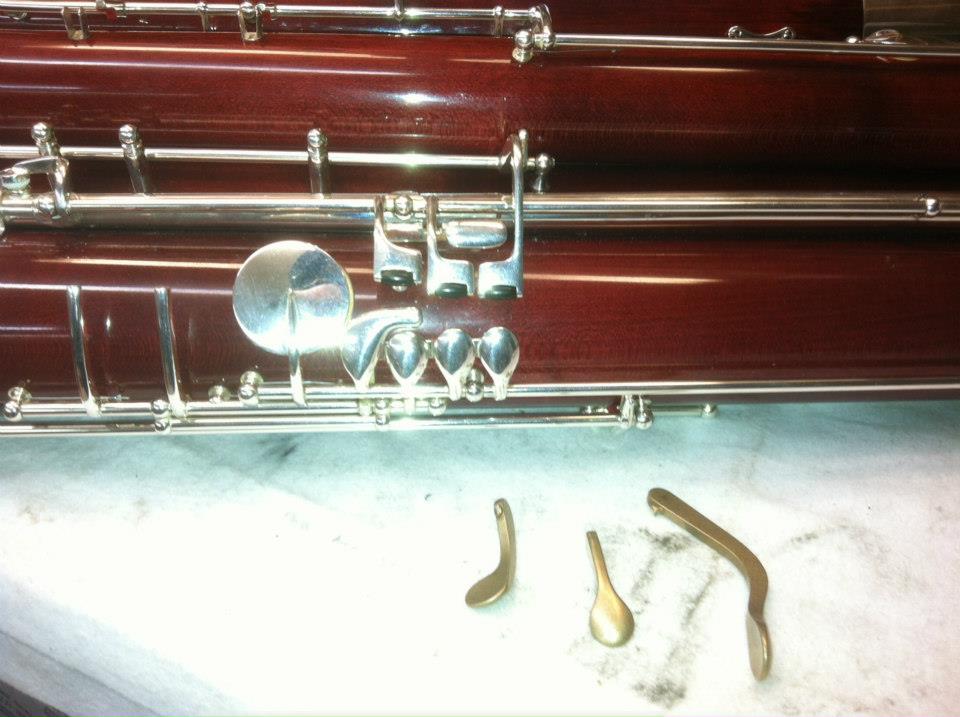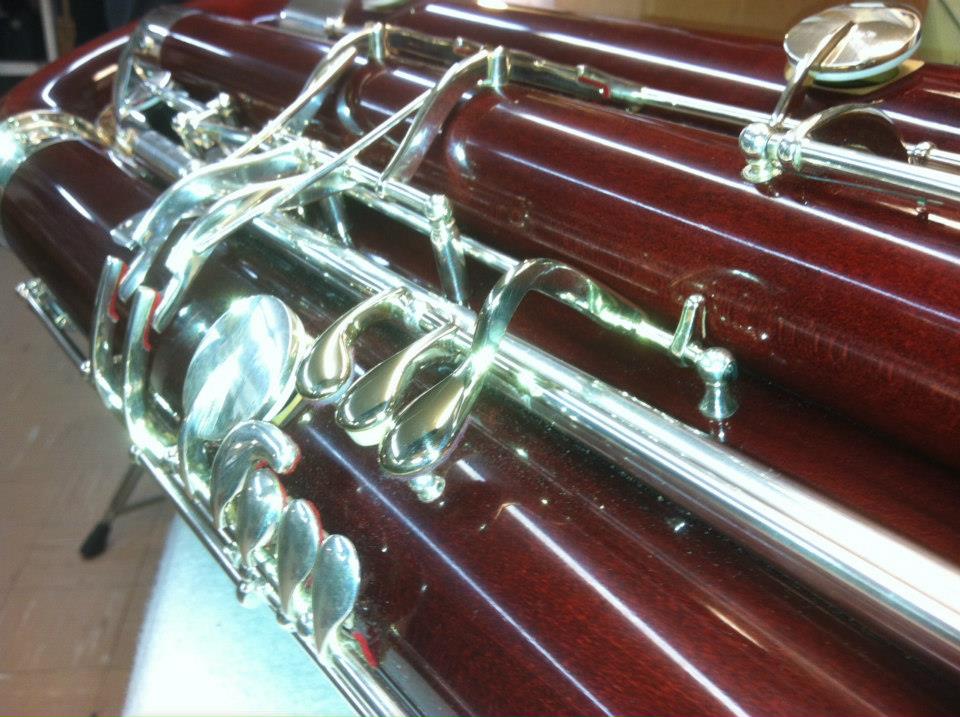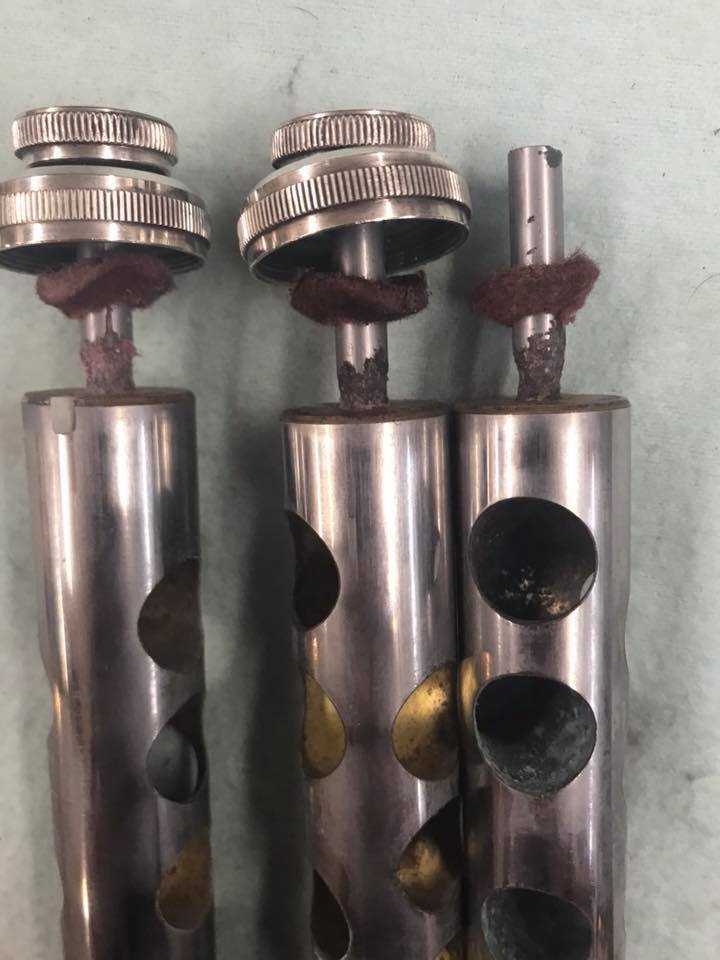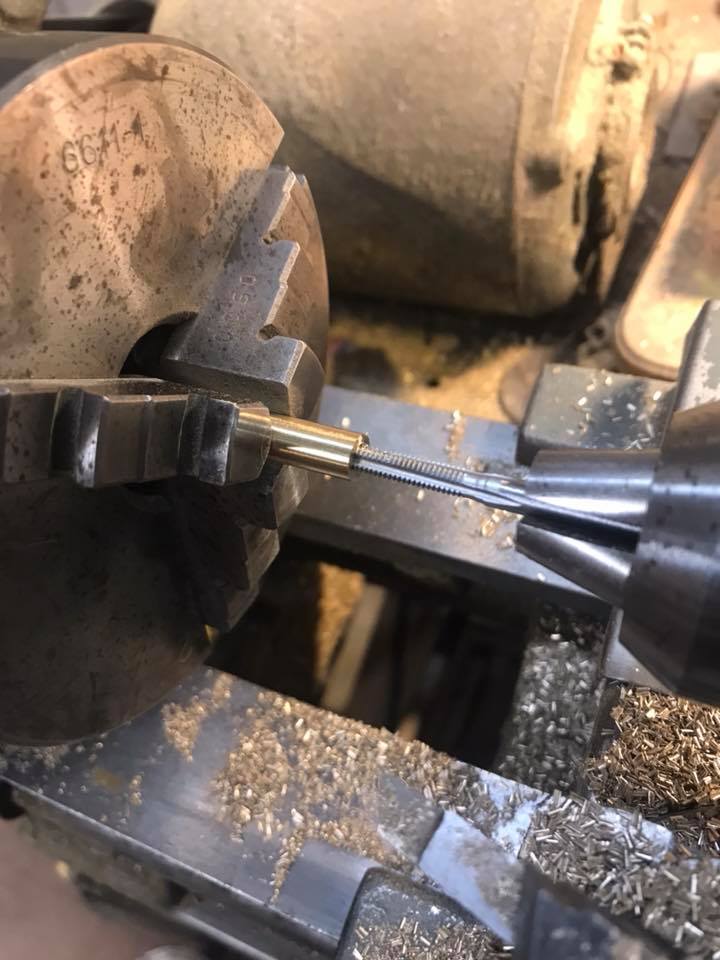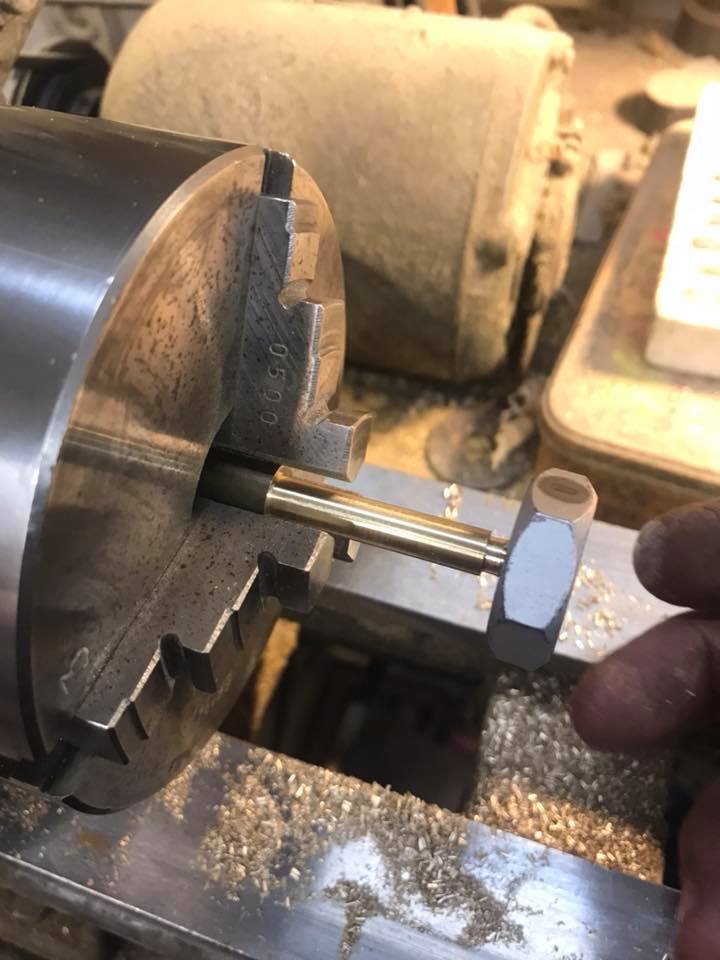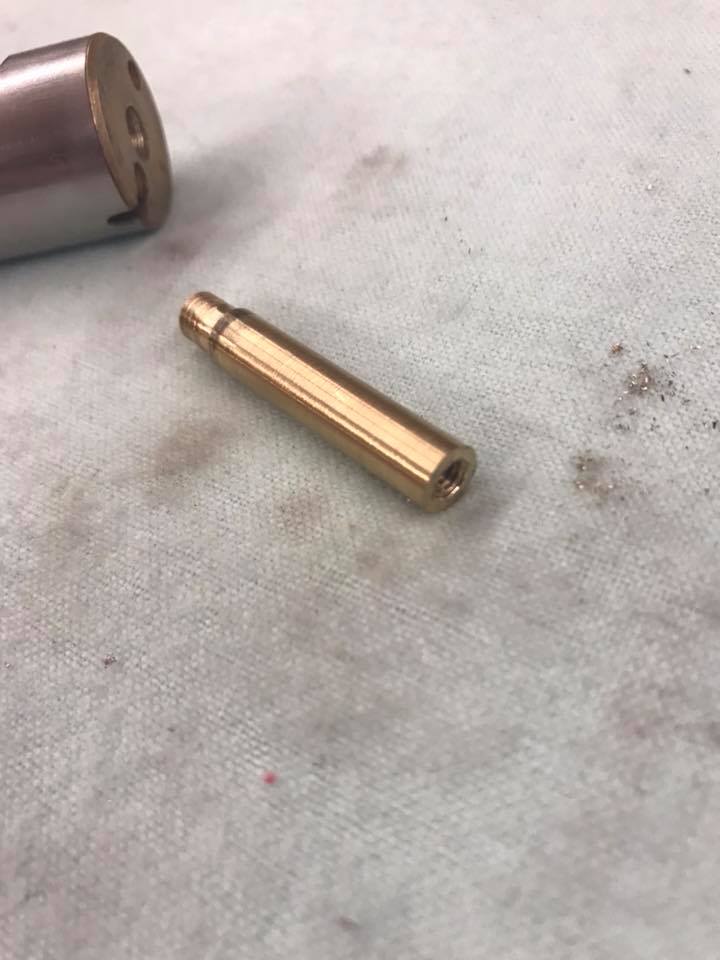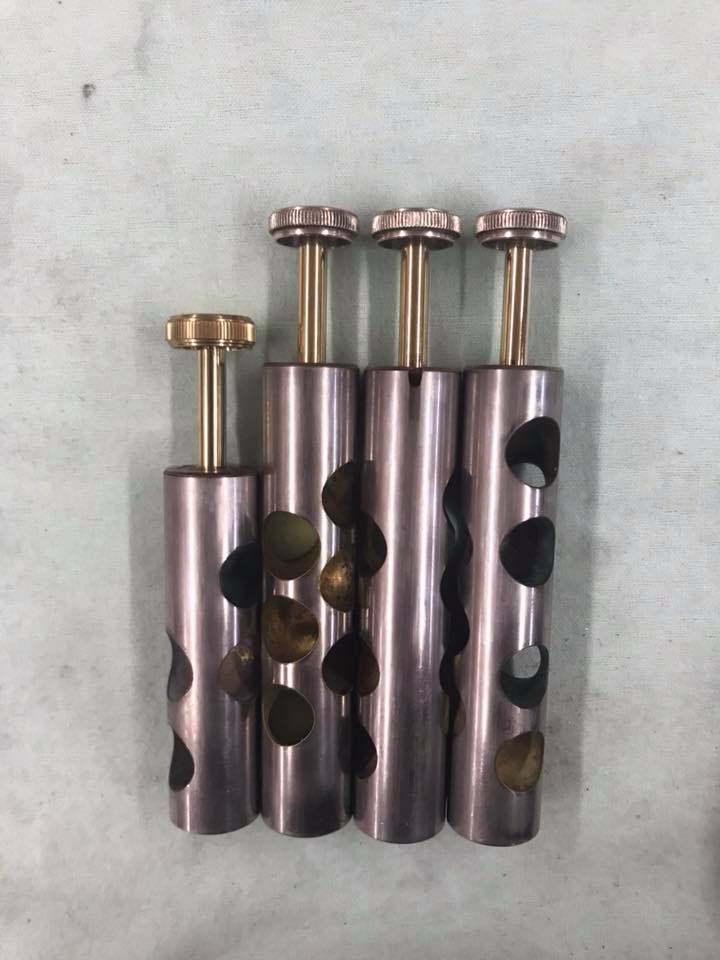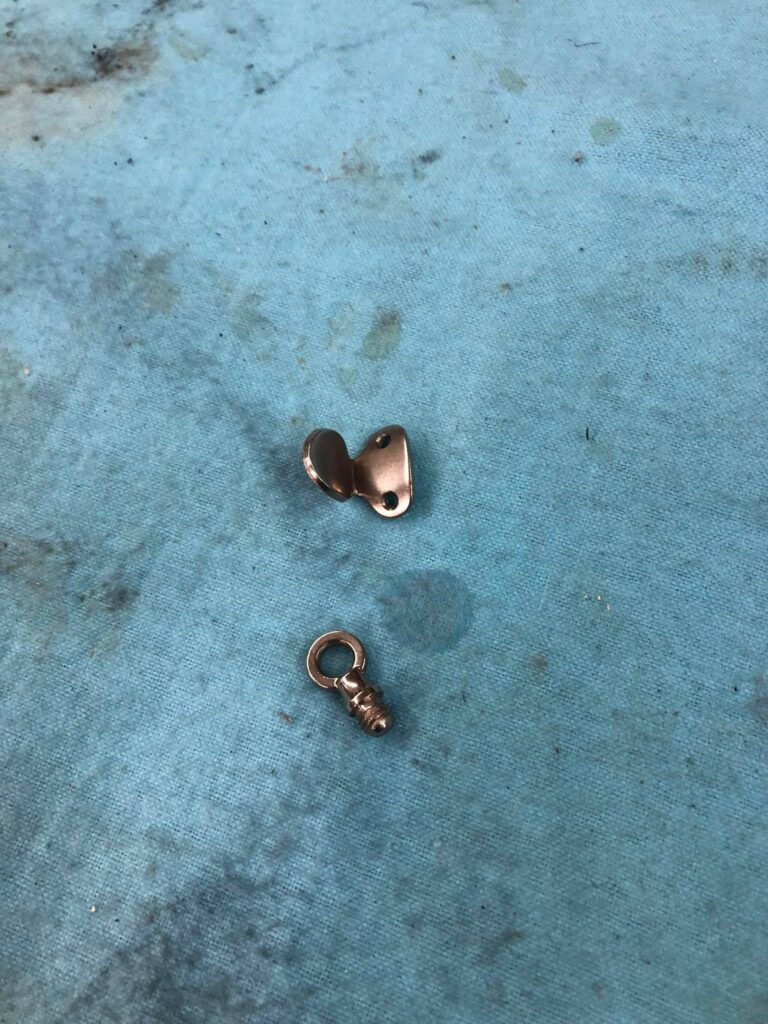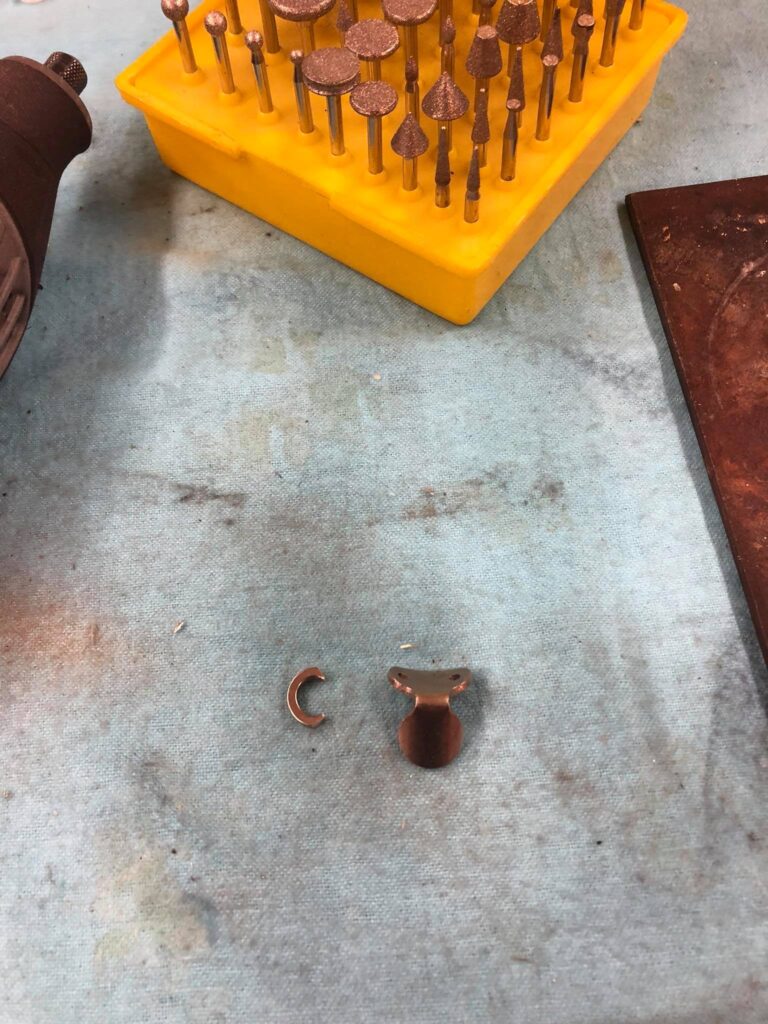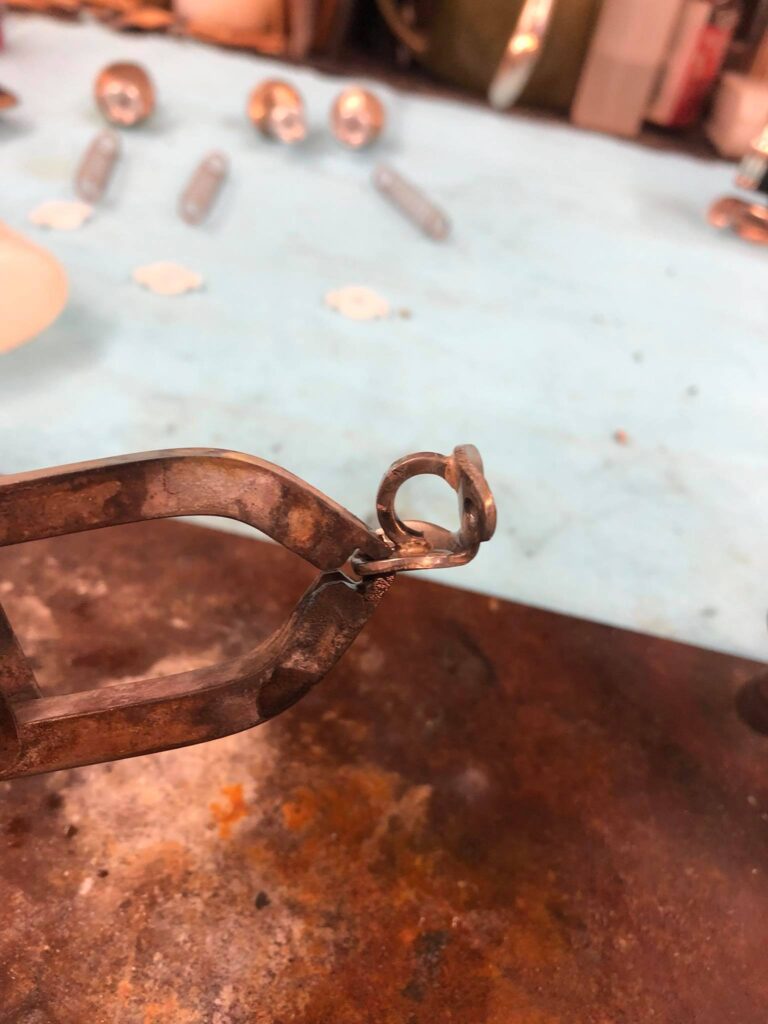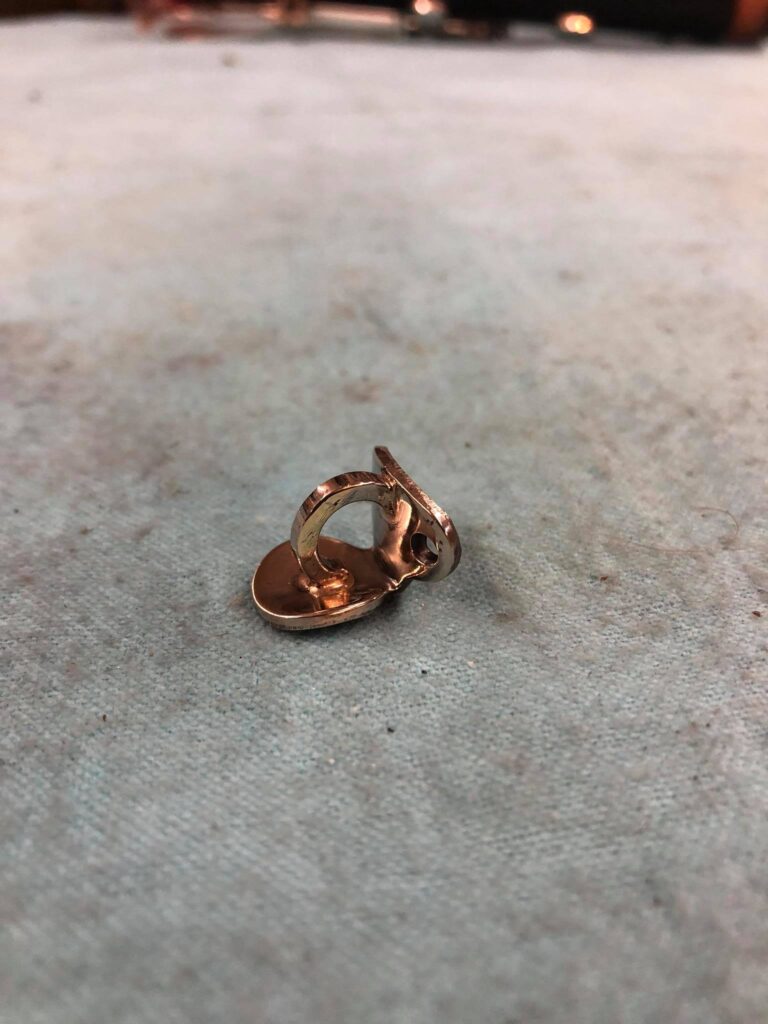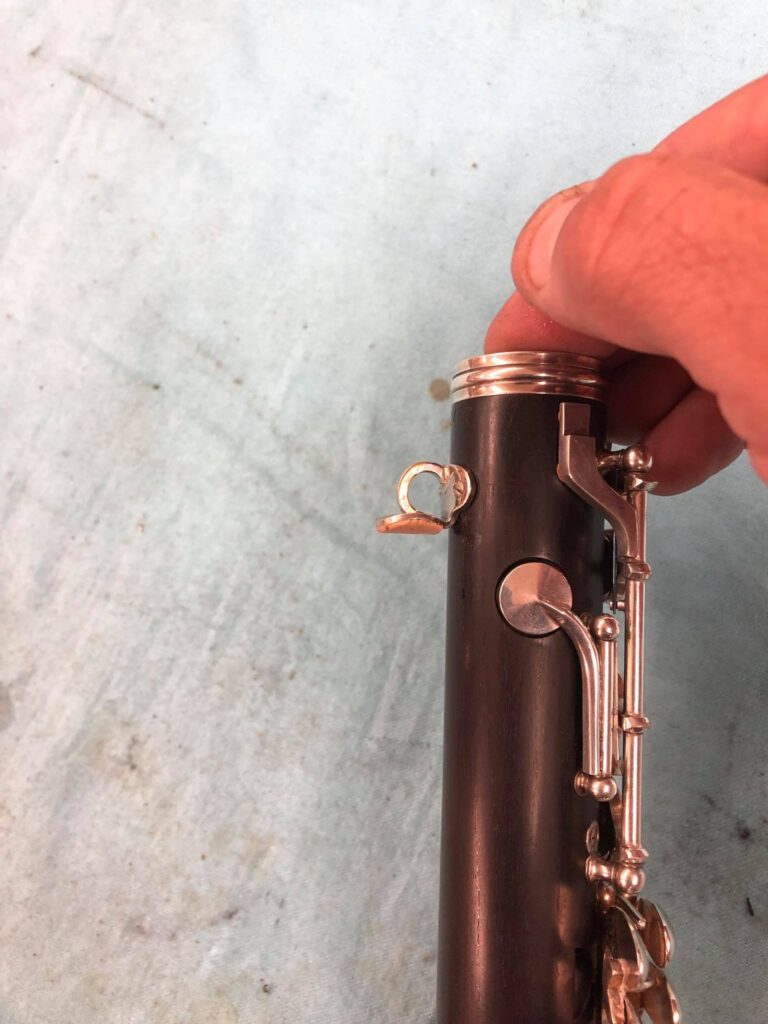Sometimes a part isn’t available in the time allotted. Occasionally the factory part proves to have flaws. And sometimes you just have to get really creative. I love these times.
Here is an example of fabricating a stronger-than-factory brace for a local Marching Band (Go Vandals!) These braces had failed on many, but here is one I had the opportunity to create. This is made from solid 1/2″ brass rod stock.
Baritone Saxophones. Ahhh, love ’em! For those that have a Low A key on the bell, the bell must be very stable for the adjustments to remain solid and lasting. This is a modification that added another axis of stability.
Here is a clarinet that I modified for a woman who had lost part of her left ring-finger. This was a challenging and satisfying project!
Here is a Conn Microtuner neck that had deteriorated. I actually took the ring tip from a different alto in “the boneyard” and added it to this neck instead of fabricating it from scratch, but both myself and the customer were pleased with the outcome, as well as the rest of the instrument!
Here is a baritone saxophone neck receiver collar that needed to be fabricated as the old one was damaged beyond repair.
This was a fairly straight-forward fabrication and addition of a brace when there was originally none.
This was a Heckel Contrabassoon on which the customer wished to have Fox brand key touches installed instead of the stock roller-style keys. After a lot of aligning, brazing, and a trip to the plater, this project made us both pretty happy.
Here is an example of what happens to anodized aluminum over time. These stems rotted out and I had to make new ones. I chose brass.
This was a fun project. I was surprised at the time that there were no products for sale quite like this. I’m pretty certain there still aren’t. A simple ring added to a clarinet thumbrest so the customer could use a neckstrap. This customer did not wish to use the adjustable versions on the market. Thus, this was created. We repeated this process for at least one more of his clarinets.
